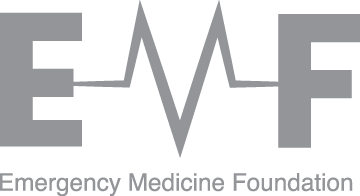Grants Awarded
Rural and remote
> Trauma Care in Regional Rural and Remote Qld
> Trainee
> Staff Specialist
> Special Funding Round COVID-19
> Rural and Remote Research Program
> Research Scholarship
> Research Capacity Building
> Project
> Program
> Patient Flow
> Leading Edge
> JumpStart
> Emerge
> Capacity Building
Queensland
> Trauma Care in Regional Rural and Remote Qld
People living in regional, rural, and remote areas are more likely to experience poor health outcomes and to suffer traumatic injuries than those living in cities. When help is needed, patients, their families or carers can contact the Royal Flying Doctor Service(Queensland Section) (‘RFDS(QLD)’) directly using their 24/7 telehealth service. Doctors are available to provide advice remotely, and if needed, prescribe medications and potentially lifesaving treatments that are immediately accessible from the 1,300+ medical chests located across the state while an air retrieval is arranged. Between July 2022 – June 2024, RFDS(QLD) received 9,700+ calls of this kind. To ensure…
Principal Investigator:
Dr Jacob O'Gorman
Amount Awarded: $40,000
Institution: Royal Flying Doctor Service (Qld)
> Trainee
> Staff Specialist
> Special Funding Round COVID-19
> Rural and Remote Research Program
> Research Scholarship
> Research Capacity Building
Most clinical staff working in the ED are clinical facing, allowing little to no time to develop research or their skills in research. The primary aim of the CBG is to support, develop, and undertake research of importance for Robina ED with Robina ED staff, HHS Executives, and consumers. Our strategic vision for the CBG is to have research an integral part of clinical practice and education at Robina ED and that guidelines and policies are informed by our research. It will be guided by the GCH ED Research Strategy which has 4 goals: 1) Organise emergency care research; 2)…
Principal Investigator:
Prof Julia Crilly OAM
Amount Awarded: $99,076
Institution: Gold Coast Health
> Project
The next phase of studies, titled "Paris on Country," represents a continuation of efforts in Australia and New Zealand to enhance care for infants and children presenting with acute respiratory issues in emergency departments. Through these studies, we have successfully implemented changes in treatment protocols, aimed at alleviating respiratory distress and reducing anxiety for both patients and their parents. In rural and remote areas of Queensland, approximately 38 percent of the state's total population resides. However, access to healthcare and emergency services in these areas can significantly differ from urban regions. The primary goal of this project is to elevate…
Principal Investigator:
A/Prof Donna Franklin
Amount Awarded: $272,283
Institution: Gold Coast University Hospital
> Program
> Patient Flow
> Leading Edge
More than 6 million peripheral intravenous catheters (PIVCs) are inserted in patients' veins in Australian emergency departments (EDs) annually. These devices can be challenging to insert, and over half will fail before the treatment is finished. Although ED clinicians regularly insert PIVCs, most inserters are junior medical or nursing staff who often default to short PIVCs because that is what they were trained to insert. These “generalist” inserters often don’t have the skills or knowledge to select alternate vascular access devices appropriate to the patient's needs. In contrast, Vascular Access Specialists (VAS) are experts with advanced assessment and expertise in…
Principal Investigator:
Dr Grace Xu
Amount Awarded: $105,000
Institution: Royal Brisbane & Women's Hospital
Efficacy of pressure pad vs pressure bandage immobilisation for snake bite first aid
Snake bite affects thousands of Australians every year, but few die as a result due to high quality first aid and timely medical care. Good first aid should be simple, standardised, use minimal or readily available equipment, and be able to be utilised effectively with no or minimal training by the rescuer. Over time the first aid methods used to manage snake bite in Australia have been questioned due to issues with efficacy, and some emerging evidence of harm from their use. There is little experimental data in the literature to support current first aid practices, and what exists suggests…
Principal Investigator:
Dr Adam Holyoak
Amount Awarded: $96,157
Institution: Townsville University Hospital
> JumpStart
Syndesmosis injuries, also known as a high ankle sprain, due to ligamentous injury are relatively uncommon but can have devastating outcomes when missed. This includes chronic pain, instability and osteoarthritis. Early surgical fixation of these injuries is recommended in some cases. Magnetic Resonance Imaging (MRI) is the most accurate way to diagnose these, but not ordered in the emergency department (ED) due to its cost and poor availability. Although clinical tests can help to narrow down who needs an MRI, they are often inaccurate in the acute phase. Ultrasound performed by sonographers can visualise ligament to components of the syndesmosis…
Principal Investigator:
Ms Laura Hayes
Amount Awarded: $49,942
Institution: Redland Hospital
> Emerge
PINNACLE: Physiotherapists INjectiNg the AnaesthetiC Lidocaine in Emergency
Emergency Departments (EDs) are under considerable strain with increasing demand for services by consumers (1,2). In 2020-2021, there were approximately 8.8 million presentations to Australian public hospital EDs, a 6.9% increase compared to 2019-2020 (2). Increasing patient presentations into already crowded EDs drives the search for alternative approaches to patient care that might expedite treatment. At The Prince Charles General Emergency Department (TPCH-GED), a process for advanced scope Emergency Physiotherapy Practitioners (EPP) by certifying them to perform digital ring blocks to assist more timely management of finger/toe fractures/dislocations has been developed. This study aims to compare EPP performed digital ring…
Principal Investigator:
Mr Richard Anderson
Amount Awarded: $9,976
Institution: The Prince Charles Hospital
> Capacity Building
Rural and remote
> Trauma Care in Regional Rural and Remote Qld
> Trainee
> Staff Specialist
> Special Funding Round COVID-19
> Rural and Remote Research Program
> Research Scholarship
> Research Capacity Building
> Project
> Program
> Patient Flow
> Leading Edge
> JumpStart
> Emerge
> Capacity Building
Queensland
> Trauma Care in Regional Rural and Remote Qld
Fibrinogen is a component of blood that is vital in the formation of blood clots, and low levels are often found in trauma patients who are bleeding. Low levels of fibrinogen cause problems with blood clotting and result in ongoing bleeding. Replacement fibrinogen has only been available in major hospitals which has been a problem given that the majority of trauma patients (most from the result of road accidents) treated by pre-hospital medical services are in rural and remote areas where this has not been available. Fibrinogen concentrate (FibC) is being introduced into Queensland’s pre-hospital and retrieval services to improve…
Principal Investigator:
Dr Eleanor Kitcatt
Amount Awarded: $161,423
Institution: Retrieval Services Queensland
Globally, road traffic accidents are a leading cause of death in younger adults, particularly as a result of traumatic brain injury (TBI). Patients in rural and remote locations who have suspected TBI may need transfer for definitive investigation and management. Despite established guidelines on the need for CT imaging in minor TBI, we believe low-value transfers of this population group occur, placing an unnecessary burden on the patient, their family, and the healthcare system. This project aims to explore the interhospital transfer of people with mTBI, in an attempt to identify if and how such low-value care can be avoided,…
Principal Investigator:
Dr Clinton Gibbs
Amount Awarded: $27,170
Institution: Retrieval Services Queensland
REPRIEVE: Rural/Remote Emergency Pain Relief Investigation and Evaluation
Injuries confer a substantial burden on ambulance services. Ensuring optimal pain management for injured patients in the out-of-hospital setting is imperative, and even more so for those living in rural/remote areas, where transportation times to hospital may be longer. There is evidence for the potential for improvement in pain relief in the out-of-hospital setting. Inadequate pain relief has lasting negative physiological and psychological implications and decreases overall quality of life. While there is little research focusing specifically on management of pain incurred through trauma in regional/rural/remote environments, there are several reasons that pain management may be suboptimal in rural/remote trauma…
Principal Investigator:
Ms Stephanie Nixon
Amount Awarded: $35,600
Institution: Queensland Ambulance Service
> Trainee
> Staff Specialist
> Special Funding Round COVID-19
> Rural and Remote Research Program
> Research Scholarship
> Research Capacity Building
Research Capacity Building Grant – The Prince Charles Hospital
The proposed Research Capacity Building grant aims to increase participation in research, strengthen the research culture and ensure that research becomes core business within The Prince Charles Hospital Emergency Department (TPCH-ED). The strategic vision includes strengthening of systems and structures that enable researchers, both novice and experienced, across all disciplines to participate in high-leverage, practice-changing research activities, with a view to embedding a research culture into day-to-day practice. A core element is the strengthening of collaborations between departments, across disciplines and with other health facilities. The proposed strategy is the training of a group of research nurses to equip them…
Principal Investigator:
Dr Faye Jordan
Amount Awarded: $93,337
Institution: The Prince Charles Hospital
Research Capacity Building Grant – Townsville University Hospital
The aim of the proposed EMF grant is to enable Townsville University Hospitals' emergency department (TUH DEM) to create a stable platform for prolific, innovative and translational research. Further more, it will contribute to the strategic vision of TUH DEM being a centre of excellence in EM research and innovation that delivers high-quality emergency care. The research capacity building grant will support an Emergency Medicine Clinical Research Coordinator to assist research active emergency clinicians in sustaining ongoing projects, designing and conducting new high-quality, outcome-oriented projects, nurturing the next generation of EM researchers and embedding research into daily business of TUH-DEM.
Principal Investigator:
Dr Vinay Gangathimmaiah
Amount Awarded: $98,108
Institution: Townsville University Hospital
> Project
Suspected Pulmonary Embolism Exclusion with D-dimers in Emergency Departments (SPEED-ED)
Pulmonary embolism (PE) refers to blood clots in the lung. They can cause sudden death, collapse, chest pain, shortness of breath yet sometimes they cause no symptoms at all and are discovered incidentally. As they can be severe, they have become regarded as a not-to-miss diagnosis. As they can present with a variety of symptoms, emergency clinicians consider the possibility of PE on a frequent basis. When considering whether a patient has a PE, the clinician may confirm or exclude the diagnosis directly with definitive chest scans. However, these scans are time consuming, costly and have other side effects including…
Principal Investigator:
A/Prof Colin Banks
Amount Awarded: $169,095
Institution: Townsville University Hospital
We propose to conduct a multi-centre blinded cluster cross over randomised clinical trial (RCT) of plasmalyte (PL), a balanced salt solution versus normal saline (NS) in patients admitted to an Intensive Care Unit (ICU) with diabetic ketoacidosis (DKA), a life-threatening complication of diabetes mellitus. DKA results in elevated acid levels in the blood leading to severe dehydration and electrolyte imbalance. ICU admission rates for patients with DKA in Australia has risen annually. In 2019 and 2020, there were 2751 and 2812 admissions to ICUs respectively. Almost all patients present through the Emergency Departments and in regional hospitals, they are often…
Principal Investigator:
Prof Gerben Keijzers
Amount Awarded: $164,384
Institution: Gold Coast University Hospital
SPASMS: Study of Paediatric Appendicitis Scores and Management Strategies
Abdominal pain is one of the commonest reasons for children to attend the emergency department (ED), and acute appendicitis is the most common cause of abdominal pain requiring surgery. There are various clinical prediction scores that have been developed to help doctors diagnose appendicitis; however, most scores were developed overseas and are not routinely used in Australian EDs. The aim of this project is to review different published scores and compare them with overall clinician impression in diagnosing acute appendicitis in children presenting to ED. The project will include all patients presenting to the ED with abdominal pain that are…
Principal Investigator:
Dr Natalie Phillips
Amount Awarded: $99,442
Institution: Queensland Children's Hospital
> Program
> Patient Flow
> Leading Edge
Arterial injuries to the lower limb, such as from a shark bite or deep laceration, can lead to catastrophic bleeding and death. Current first aid measures involve trained personnel applying an arterial tourniquet. However, even a short delay in haemorrhage management can lead to significant blood loss, brain injury or death. There is growing evidence that the simple technique of applying pressure to the groin can effectively occlude blood flow through the femoral artery, buying time for medically trained personnel to attend. One potential application of this technique is the treatment of shark attack victims with lower limb injuries, where…
Principal Investigator:
Dr Kimberley Bruce
Amount Awarded: $54,305
Institution: Gold Coast University Hospital
Biomarkers for rapid diagnosis of paediatric sepsis
Sepsis is a time critical medical emergency that arises when the body starts to attack its own tissues and organs in response to an infection. Sepsis can result in organ dysfunction, multi-organ failure and death if not treated promptly, and is a leading cause of death in children worldwide. Sepsis often presents with non-specific signs common to many mild infections, making it difficult to detect early and accurately, leading to delaying appropriate treatments and resulting in severe sepsis. Therefore, it is vital to identify new approaches to rapidly identify the type of infection and predict the severity of the condition…
Principal Investigator:
Dr Amanda Harley
Amount Awarded: $99,924
Institution: Gold Coast University Hospital
Although pain is the most common reason for children to come to the emergency department (ED), it is frequently under-treated and under-recognised. We know children are particularly vulnerable to inadequate pain care, relying on adults to interpret their pain and act as advocates. A recent audit of children presenting in pain at Redcliffe ED found that many children with broken arms waited for prolonged periods (48 – 174 minutes) for pain medicine. The Redcliffe ED team identified significant barriers to pain care: staff’s inability to identify pain in children, lack of parental/clinician advocacy and lack of knowledge around paediatric medicines.…
Principal Investigator:
Dr Jason Chan
Amount Awarded: $90,429
Institution: Redcliffe Hospital
Older persons from residential aged care homes (RACF) have unique needs that are often overlooked in our traditional emergency departments (EDs). This can lead to under triage, prolonged length of ED stays, unnecessary investigations and iatrogenic hospital acquired complications (1). The Residential Aged Care District Assessment and Referral Rapid Response (RADAR RR) model is a pre-hospital Queensland Ambulance Service (QAS) co-responder model providing ED equivalent care in the resident’s home for acute illness and injury. RADAR RR model operates between 0800 and 2000, 7 days a week. We hope to evaluate the clinical and cost outcomes of the RADAR RR…
Principal Investigator:
Dr Elizabeth Marsden
Amount Awarded: $84,949
Institution: Metro North Hospital and Health Service
Injury and trauma are common presentations to Queensland Emergency Departments. Clinicians caring for trauma victims must maintain competency with trauma procedures and interventions to apply them in a time-critical context, accurately, and therefore achieve the best outcome for individual patients. Engagement with traditional educational approaches, such as face-to-face training, is challenged by workload, shift patterns, clinician location and lack of opportunity to attend dedicated training events. A previous learning needs analysis of trauma education programs has highlighted that the greatest challenges are often faced by clinicians in rural and remote locations. One solution is to include the use of online…
Principal Investigator:
Dr Frances Williamson
Amount Awarded: $97,469
Institution: Royal Brisbane & Women's Hospital
Nausea and vomiting are common reasons for people to call an ambulance. In Queensland, paramedics can provide a medication called Ondansetron to reduce the severity of nausea and vomiting. Alternative medicines, such as metoclopramide and droperidol, are also used in the emergency department or by ambulance services in other states. Despite the widespread use of medications for nausea and vomiting, little is known about their effectiveness in the prehospital setting. The limited evidence that exists comes from small studies in the emergency department setting, and indicates that medications may be no more effective than placebo for reducing nausea and vomiting.…
Principal Investigator:
A/Prof Jaimi Greenslade
Amount Awarded: $99,527
Institution: Royal Brisbane & Women's Hospital
> JumpStart
Chest pain is a very common presentation to emergency departments and has wide variety of causes including life threatening conditions such as a heart attack and benign causes such as a muscular strain. Often the biggest challenge is to appropriately identify an individual's risk of suffering a heart attack, while ensuring that the harms associated with potential over-investigation are minimised. This requires an efficient and systematic risk stratification process, and has been the focus of a lot of research. Currently, in Queensland the approach to this challenge is to use a blood test called troponin, along with ECG, to determine…
Principal Investigator:
Dr Paul Calner
Amount Awarded: $41,120
Institution: Sunshine Coast University Hospital
Emergency Departments are experiencing an ever increasing volume of patients presenting for medical care. At times, the number of patients in Emergency Departments can exceed the number of available beds. When this happens, sicker patients are allocated to treatment areas while those less unwell are required to wait in the waiting room. Some waiting room patients will inevitably become more unwell before being seen by a doctor. Measuring vital signs - blood pressure, heart rate, breathing rate, blood oxygen levels, temperature - is a proven method for early detection of deterioration in unwell patients. Emergency triage clinicians endeavour to measure…
Principal Investigator:
Ms Courtney West
Amount Awarded: $31,987
Institution: Townsville University Hospital
The Queensland Ambulance Service (QAS) provides out-of-hospital medical services to approximately 900,000 patients annually, and as the publicly funded provider of prehospital emergency care is called to respond to persons incarcerated within correctional facilities. The primary complaint of patients attended by QAS in this setting are minor orthopaedic injuries to the upper arm and hand. In current practice, paramedics provide short-lasting analgesia and temporary limb splinting or bleeding control, before conveying the patient to an emergency department for further management. Transport of patients from correctional facilities to public hospitals is complex, presenting potential risks to staff and the public, and…
Principal Investigator:
Dr Claire Bertenshaw
Amount Awarded: $32,840
Institution: Queensland Ambulance Service
Validation of a Modified Fibrinogen on Admission with Trauma (FibAT) Score in the Australian Setting
Soon after injury, some individuals develop a condition where their body doesn't clot properly, leading to increased blood transfusions and increased mortality. An important aspect of clotting is a protein called fibrinogen which forms the scaffolding on which clots are formed. Fibrinogen is the first aspect of clotting that is impaired, but it is easily replaced if it is recognised with a specific blood test. Unfortunately this blood test may not be available rapidly in rural hospitals, which may lead to a delay in recognition. A scoring system called the Fibrinogen on Admission for Trauma (FibAT) has been developed in…
Principal Investigator:
Dr Daniel Bodnar
Amount Awarded: $39,952
Institution: Royal Brisbane & Women's Hospital
> Emerge
How are hypertensive urgencies managed in emergency departments in Queensland?
Hypertension is a highly prevalent, chronic cardiovascular disease with considerable impacts to population health. Although hypertensive urgencies are common encounters in emergency departments (ED), there is a lack of clear guidance for their clinical management. A poorly managed hypertensive urgency can leave the patient with continuing severe hypertension and at increased risk of end-organ damage. The objective of this study is to determine the current management strategies for hypertensive urgencies in Queensland EDs, and to better understand the reasons for their use. We will survey Queensland ED physicians about their use of and opinions about current management strategies for hypertensive…
Principal Investigator:
Dr Yit Jian Lee
Amount Awarded: $9,766
Institution: Redland Hospital
Delirium in the older adult population is a common hospital complication linked to multiple adverse outcomes including longer lengths of stay, increased morbidity and mortality, greater cognitive and functional decline, and increased risk of re-presentation to the emergency department (ED). Patients with delirium can increase healthcare expenses by up to $30,000 extra per patient. This places a significant burden on the patient and the health system. The Geriatric Emergency Department Initiative (GEDI) has shown benefits in the ED management of older patients including reduction of re-presentations to the ED. However, the effectiveness of GEDI for older patients with delirium remains…
Principal Investigator:
Ms Kendall Williams
Amount Awarded: $9.896
Institution: Redland Hospital
Primary Immune Deficiency can develop into frequent and in some cases severe infections, and inflammation. With this cohort of patients being so vulnerable, they should be treated and assessed promptly when presenting to an emergency department with a fever. There remains a critical need in this specific population to optimise strategies aiming to improve the recognition as to which febrile patients require immediate intervention, and to identify if treatment can be withheld/de-escalated safely. Currently there are limited guidelines and knowledge surrounding this specific population when they present to an ED creating a gap in research. This dissertation will aim to…
Principal Investigator:
Ms Samantha Ryan
Amount Awarded: $10,000
Institution: Queensland Children's Hospital
Paramedics are increasingly having to provide culturally competent care to non-English speaking (NES) patients as a result of growing multiculturalism in our communities. Despite this, healthcare literature continues to highlight poorer levels of access to healthcare and overall poorer health outcomes in NES individuals. Since the COVID-19 Pandemic, expansions in the realm of ambulance telehealth have highlighted complexities with providing culturally appropriate care to NES speaking patients due to inherent communication barriers associated with telecommunication. Although there is existing research exploring the disparities in conventional telehealth use among NES patients, there is limited research of this cohort in the setting…
Principal Investigator:
Mr Ricky Lam
Amount Awarded: $9,594
Institution: Queensland Ambulance Service
> Capacity Building
Rural and remote
> Trauma Care in Regional Rural and Remote Qld
> Trainee
> Staff Specialist
> Special Funding Round COVID-19
> Rural and Remote Research Program
> Research Scholarship
> Research Capacity Building
> Project
> Program
> Patient Flow
> Leading Edge
> JumpStart
> Emerge
> Capacity Building
Queensland
> Trauma Care in Regional Rural and Remote Qld

Older patients with minor head injury routinely get a head scan in emergency departments due to the risk of a brain bleed. Recent studies have suggested that some of these patients may not need a head scan. However, doctors do not currently have an accurate method to identify those patients who do not need a scan. This research aims to identify a subgroup of older patients with minor head injury who do not have a brain bleed and can be safely managed without a head scan. As there are no known Australian studies in this area, this innovative project addresses…
Principal Investigator:
Dr Tanya Mellett
Amount Awarded: $34,888
Institution: Townsville University Hospital

Queensland’s dispersed population poses significant challenges to emergency trauma system design, requiring both road and aeromedical retrieval services, trauma outreach services and specialist transfer protocols for time critical injuries to maximise survival. Road trauma is one of the main mechanisms causing traumatic brain injury (TBI). Pinpointing geographic regions with significant disadvantage for timely access to neurosurgical services is needed for targeting education, treatment and outreach services to Queensland regions most in need. The Injury Treatment and Rehabilitation Accessibility Queensland Index (iTRAQI) is a tool being developed by this team, and piloted for TBI. iTRAQI maps aeromedical/road transport access routes and…
Principal Investigator:
Dr Clinton Gibbs
Amount Awarded: $37,667
Institution: Retrieval Services Queensland
> Trainee
> Staff Specialist
> Special Funding Round COVID-19
> Rural and Remote Research Program
> Research Scholarship
> Research Capacity Building
Research Capacity Building Grant – Retrieval Services Queensland
We propose to establish a 0.4FTE Research Coordinator role at RSQ to lead development of research capacity and culture within the agency, and provide support across our partner organisations – Lifeflight Retrieval Medicine (LRM) and the Royal Flying Doctor Service (RFDS) – QLD Section. The Research Coordinator will provide a dedicated research focused role that will form part of the Research Leadership Team within RSQ, reporting to the RSQ Clinical Director for Research and Evaluation. They will be a key liaison with research partners and collaborators across the broader health sector, working closely with the Clinical Director. It is anticipated…
Principal Investigator:
Dr Clinton Gibbs
Amount Awarded: $97,120
Institution: Retrieval Services Queensland
Research Capacity Building Grant – Sunshine Coast Hospital and Health Service
The aim of this application is to increase participation in research, strengthen research culture and systematize research processes within SCHHS ED. The strategic vision is the development of systems and structures that encourage and support researchers and invite participation in research. The central element of this application is the implementation of a Research Manager who will establish processes for tracking and applying for grants, completing research governance requirements, recruiting and supporting new researchers, and developing networks. To ensure there is minimal disruption to the ongoing research activity of SCHHS ED while the Research Manager role is being implemented this grant…
Principal Investigator:
Dr Kent Perkins
Amount Awarded: $91,408
Institution: Sunshine Coast University Hospital
> Project
Trials in Emergency for Advancing Management of Sepsis: TEAM SEPSIS
Severe infection (sepsis) takes the lives of over 2000 Queenslanders every year. Despite this toll and intense global research, few advances and innovations have improved sepsis management for decades. The TEAM SEPSIS project comprises three studies to improve the diagnosis and treatment of patients with sepsis in the Emergency Department (ED). ICARUS-MD is a randomised controlled trial assigning patients to receive or not receive albumin in addition to standard sepsis care. Albumin will be commenced in the early phase of emergency treatment and continued each day for ten days. Albumin has the potential to improve outcomes if started early in…
Principal Investigator:
Dr Julian Williams
Amount Awarded: $261,787
Institution: Royal Brisbane & Women's Hospital
> Program
> Patient Flow
optimiSed PAtient Flow using prEhoSpital Triage (safest)
There have been significant increases in system pressure for unscheduled public healthcare in Australia. Likewise, ambulance services have seen an unprecedented increase in demand for services along with a change in ambulance utilization. These pressures affect all aspects of patient flow, from triple zero call through to hospital admission and discharge. Improvements in the integration of prehospital services into the healthcare system can reduce time delays at their interface. Triage and clinical deterioration tools guide clinicians' decisions when directing patients to clinical streams within the emergency department whilst balancing patient safety. Paramedics are highly trained clinicians, that are well placed…
Principal Investigator:
Dr Wayne Loudon
Amount Awarded: $24,368
Institution: Queensland Ambulance Service
SAFE STEPS – SAFE and Seamless Transition through Enhanced Proactive Support
The physical health equivalent of a relapse in a mental health patient would be a repeat stroke or heart attack. Episodes may be fatal and the chances of full recovery decreases with each episode. Every effort must be made to detect and prevent emerging crisis in the community. Currently, patients present to Emergency Department (ED) despite being open to community case management, using precious ED resources. There is limited evidence regarding reducing unplanned ED presentations, with some needing psychiatric inpatient care. Princess Alexandra Hospital employed a Transition Coordinator to support the care of people who are deteriorating in the community.…
Principal Investigator:
A/Prof Manaan Kar Ray
Amount Awarded: $200,000
Institution: Princess Alexandra Hospital
Criteria Led Discharge from Emergency Department Short Stay Unit
The Emergency Department Short stay unit (EDSSU) is used to facilitate flow through the Emergency department (ED) for patients requiring further investigations, treatment or period of observations, with the likely disposition of home. Current access block issues and increasing patient presentations means the SSU is consistently full, with multiple patients waiting to be transferred to this unit. Furthermore, limited medical staffing with only one junior doctor to follow up on these patients creates an exit block during periods of increased activity. Criteria Led discharge (CLD) is a proposed strategy that allows for safe and timely discharge of patients by nursing…
Principal Investigator:
Ms Jessica Christie
Amount Awarded: $25,873
Institution: Redcliffe Hospital
Paeds with a wheeze – Improving patient flow with Nurse Led Stretching of Inhaled Salbutamol (NLSIS)
Wheeze is one of the most common emergency department presentations for pre-school aged children. The typical treatment regime involves early review by a medical officer or nurse practitioner and an intensive “burst” of inhaled salbutamol therapy, followed by an admission to a short stay unit to wean inhaled salbutamol therapy to 3-hourly. The medical officer or nurse practitioner will review the child hourly to establish the need for further treatment or the capacity to increase the interval between salbutamol therapy. As they manage a concurrent case load in both the emergency department and short stay unit, there are often delays…
Principal Investigator:
Ms Andrea Hetherington
Amount Awarded: $70,904
Institution: The Prince Charles Hospital
Study to Analyse Patient Flow in Queensland Public Hospitals
This study will adopt a system-wide view to capture relationships and interactions between flow metrics to identify access issues and inform the design of interventions/solutions to improve patient flow at a system level. A system-wide approach covering prehospital and ED services offers the potential for improving patient flow at the ambulance/hospital interface. By integrating ambulance, ED and inpatient data, it is possible to identify blockages along the entire patient journey that have a flow-on effect on ED access. It is also possible to identify critical hospital and ambulance service levels when performance starts to degrade, suggesting where the system would…
Principal Investigator:
Dr Justin Boyle
Amount Awarded: $593,502
Institution: Commonwealth Scientific & Industrial Research Organisation (CSIRO)
> Leading Edge
Acute severe behavioural disturbance (ASBD) is an emergency situation where a patient experiences severe agitation or aggression. These individuals commonly present to the emergency department (ED) for treatment. Medications are often provided to assist the person to feel calmer. In most instances, oral medications are used. When the patient is extremely agitated, an intramuscular (IM) injection will be given. In individuals less than 18 years, there is minimal available evidence to guide doctors about which medications work best. It is also not known how well these medications are tolerated by these young people. Therefore, the PREDICT (Paediatric Research in Emergency…
Principal Investigator:
Dr Kent Perkins
Amount Awarded: $94,936
Institution: The Prince Charles Hospital
Chronic liver disease (CLD) is prevalent in Australian society and is the 11th leading cause of premature death (1). Thirty eight percent of patients experience gastrointestinal bleeding (GI) as a complication(2). The underlying balance between bleeding and clotting tendency is altered in chronic liver disease, making management of acute bleeding challenging in the emergency setting(3). There is a lack of high-quality evidence to guide the best combination of blood products and other medications to stop bleeding(4). Prothrombinex®-VF is a blood product which can help to improve the level of clotting factors in the body thereby reducing bleeding tendency. It is…
Principal Investigator:
Dr Akmez Latona
Amount Awarded: $100,000
Institution: Ipswich Hospital
National Emergency Department Stress, Coping and Intention to Leave Survey: DESTRESS
The emergency department (ED) is a stressful workplace. The stressful work environment has resulted in high levels of psychological distress with some using mal-adaptive coping strategies. High staff turnover is evident in some EDs. To guide the development of strategies for clinicians, health services, policy makers, and emergency colleges, this research will provide a national picture regarding the impact of stressors on health and performance. The well-being of staff is a priority for Emergency Medicine and Nursing colleges in Australia. Research reports have emerged highlighting concerns with post-traumatic stress, sleeping problems, cardiovascular disease and increasing rates of suicide among healthcare…
Principal Investigator:
Dr Elizabeth Elder
Amount Awarded: $99,607
Institution: Gold Coast University Hospital
Aboriginal and Torres Strait Islander (A&TSI) people presenting emergency departments are more likely to experience difficulty in communicating with healthcare providers, feel isolated, and experience shame and distress. These feelings lead to them leaving before they have been seen, or leaving before their treatment is completed, and they experience poorer health outcomes. Cultural safety is the ability of an organisation to meet the cultural needs of a group of people, and improved emergency department cultural safety has been shown to reduce rate of Aboriginal and Torres Strait Islander people leaving without being treated or before their treatment is completed. The…
Principal Investigator:
Dr Michelle Davison
Amount Awarded: $99,527
Institution: Sunshine Coast University Hospital
Aeromedical Retrieval of people with Acute Behavioural Disturbance in Queensland – ELEVATE Study
The burden of mental illness on the Australian community and public health care system is substantial. (1) Every year in Queensland, approximately 300 people who present to a rural or remote ED location with acute behavioural disturbances (ABD) require aeromedical retrieval to an Authorised Mental Health Service (AMHS). ABD is “combined physical actions made by an individual which are in excess of those considered contextually appropriate and are judged to have the potential to result in significant harm to the individual themselves, other individuals or property” of rapid onset and a severe nature.(2)The transfer of people experiencing ABD is challenging…
Principal Investigator:
Dr Clinton Gibbs
Amount Awarded: $80,595
Institution: Retrieval Services Queensland
Major bleeding is a leading cause of death in trauma patients. Blood product replacement is a key component of damage control resuscitation aimed at limiting coagulopathy until definitive control of bleeding is achieved. Although Major Haemorrhage Protocols (MHP) are now widely used in the initial resuscitation of traumatically injured patients (1), protocols can vary based upon individual institutions' capabilities and processes. Within Australia, the National Blood Authority 2011 Patient Blood Management Guideline Module 1: Critical Care/ Massive Transfusion (2) recommended institutions develop standardized MHP to guide clinicians regarding the dose, timing and ratio of blood component therapy for bleeding trauma…
Principal Investigator:
Dr Jessica Forbes
Amount Awarded: $95,507
Institution: Gold Coast University Hospital
> JumpStart
Relief of chest pain in the Emergency Department (RELIEF)
Many patients who present to the Emergency Department with painful conditions have extensive delays to receive pain relief. This may result in unnecessary discomfort for patients and can also mean that patients have an extended length of stay. This study focusses on improving the pain relief given to patients who present to the Emergency Department with chest pain. The study has multiple aims. The first is to identify how long patients presenting to emergency department with chest pain wait to receive adequate pain relief. The second is to document how delays to pain relief impact on the patient and on…
Principal Investigator:
Ms Emily Brownlee
Amount Awarded: $37,356
Institution: Royal Brisbane & Women's Hospital
Diabetes Service Mapping After Hours
There is a need to focus on the vulnerable type 1 diabetes (T1D) population who represent a disproportionate burden on the Australian healthcare system and who require better standards of care. Building upon our previous work, the project is an important step in determining the supports available to patients with T1D around diabetic ketoacidosis (DKA) prevention and management, outside of traditional emergency department (ED) settings and regular business hours. This is in addition to perceptions around the use of a telephone or virtual service to help prevent diabetes ketoacidosis presentations. The analysis will provide baseline comparative data for later intervention…
Principal Investigator:
Dr Sean Clark
Amount Awarded: $39,999
Institution: Caboolture Hospital
Consumer engagement in emergency healthcare research: A national cross-sectional study
Consumer engagement in research is a local, national and international priority and has been described as research being carried out ‘with’ or ‘by’ consumers, rather than ‘to’, ‘about’ or ‘for’ them. Our recent scoping review on patient and public involvement in international emergency care research (under review) found only two (of the 28) studies were undertaken in Australia and reported consumer engagement in Emergency department (ED) research, illustrating that the vision of integrated consumer and community engagement in research is a long way from the current reality. Consumer engagement can improve the quality and relevance of research, identify unmet needs,…
Principal Investigator:
Prof Julia Crilly OAM
Amount Awarded: $39,287
Institution: Gold Coast Health
Shock is an umbrella description for poor blood supply to vital organs, and can lead to multi-organ failure and death. Emergency department (ED) patients with shock are amongst the sickest, with 1/3 being admitted to an intensive care unit (ICU). Low blood pressure, a key feature of shock which causes the poor blood supply to vital organs, can be treated with medications called vasopressors. Vasopressors traditionally have been given through a so-called 'central line'. Central lines are invasive to insert and require skill, and the actual insertion can lead to complications. More evidence has emerged that so-called peripheral lines (aka…
Principal Investigator:
Dr Thomas Holland
Amount Awarded: $38,766
Institution: Caboolture Hospital
> Emerge
Safety and efficacy prehospital procedural sedation for fracture and dislocation reduction
Queensland Ambulance Service (QAS) Critical Care Paramedics are authorised to perform reduction of displaced fractures and dislocations in the presence of neurovascular compromise. This is frequently facilitated by procedural sedation with ketamine. Performance of this procedure in the prehospital setting is not well reported in the medical literature Using the QAS database of electronic Ambulance Report Forms we will identify all cases where fracture or dislocation reduction was performed and report on the efficacy of this procedure using resolution of neurovascular compromise as the primary endpoint. We will use the requirement for further sedation and reduction in the emergency department…
Principal Investigator:
Dr John Glasheen
Amount Awarded: $9,786
Institution: Queensland Ambulance Service
This research project will examine the impact of implementing a point of care lactate machine on the earlier administration of antibiotics in paediatric patients diagnosed with sepsis in the Emergency Department. Elevated lactate levels have been shown to be an accurate prognostic factor in predicting morbidities among patients with sepsis. Current practice requires serum lactate samples collected via intravenous cannulation, a task that is both time consuming and challenging for paediatric patients and clinicians. The point of care lactate machine is a portable, single operator handheld device, requiring finger-prick blood sample to obtain an accurate lactate result. This negates the…
Principal Investigator:
Ms Cassandra Ross
Amount Awarded: $10,000
Institution: Redcliffe Hospital
Upper limb injuries including bony fractures/dislocations, are sometimes deformed and require realignment in the emergency department (ED). Numerous techniques are available to allow this procedure to be painless. Bier block (BB) involves placing a band on the upper part of the affected arm to constrict blood flow, with injection of numbing agent into a hand vein on the same side to make the entire arm numb. An alternative technique is ultrasound guided supraclavicular blocks (UGSCB), which involves introducing a needle under ultrasound guidance to nerves situated just above the collar bone and injecting numbing agent around these nerves to make…
Principal Investigator:
Dr Henry Tsao
Amount Awarded: $8,758
Institution: Redland Hospital
Since the introduction of COVID-19 immunisations for young people aged 0-16yrs, patients and families have presented to the Emergency Department (ED) with concerns about possible side-effects. There have been rare but potentially serious complications of these immunisations reported worldwide including inflammation of the heart muscle and lining. These patients therefore need careful assessment and investigation in the Emergency Department. This study will measure the number of patients presenting with these concerns, how they have been cared for and the outcomes of these assessments. It will assess the impact on Emergency Department (ED) resources and whether guidelines for assessment and reporting…
Principal Investigator:
Dr Jennifer Jones
Amount Awarded: $10,000
Institution: Queensland Children's Hospital
External Ventricular Devices in Aeromedical Retrieval- Are they Safe?
Nationally, 1-2 % of the population will sustain a significant bleed due to the rupture of an abnormal ballooning of the blood vessels within the brain. A complication of this, called hydrocephalus, requires a drain to be inserted into the brain to reduce excessive fluid build-up, until the definitive management is achieved. Advances in interventional radiology techniques such as endovascular coiling have become common practice in the management of these patients. In Queensland, endovascular coiling is mostly performed in Brisbane, and therefore patients outside of the Brisbane area are required to travel for this treatment. For critically unwell patients in…
Principal Investigator:
Ms Anita Wall
Amount Awarded: $9,734
Institution: James Cook University
Insertion of intravenous (IV) cannulas (often called a drip) in children is difficult and potentially distressing for the child and their family. The goal of this project is to use the best evidence available to improve and standardise the procedure of placing the drip, so we improve our success on the first attempt and reduce complications. The evidence-based bundle includes a decision-making guide, visual pictures, and resources to support staff performing the procedure. Best practice techniques include appropriate pain relief, holding and distracting the child well, and dressing the drip securely so it is less likely to fall out. The…
Principal Investigator:
Dr Michelle Dodds
Amount Awarded: $9,600
Institution: Redcliffe Hospital
Predicting in-flight hypotension in aeromedical trauma patients
In-flight hypotension (low blood pressure) leading to patient deterioration is a common and challenging clinical problem in aeromedical trauma patients. Predicting this risk is currently primarily based on clinical gestalt, without specific validated risk prediction tools. The Triage Revised Trauma Score (TRTS) is a clinical risk prediction tool calculated using only vital signs, making it well suited to the resource-limited pre-hospital environment. A Life Flight Retrieval Medicine internal audit in 2021 suggested an association between the TRTS and in-flight hypotension for trauma patients. Based on these preliminary findings, this study will address the research question, “what is the relationship between…
Principal Investigator:
Dr Benjamin Powell
Amount Awarded: $9,583
Institution: Ipswich Hospital
Maximising the effects of feedback in regional emergency medicine
Feedback improves performance. Yet establishing effective feedback practices in emergency medicine (EM) is challenging. Supervisors need to balance delivering patient care with delivering feedback in fast-paced environments. These challenges are particularly burdensome in regional settings where the workforce is less experienced, and teams are less established. To resolve this challenge, efforts are often directed towards developing supervisors’ feedback skills. Yet with the challenges experienced by regional EM supervisors, the model of ‘supervisor driving feedback’ is inefficient. What has been overlooked is developing trainees as active participants in feedback practices. Evidence suggests that this approach may improve feedback practices in EM…
Principal Investigator:
Dr Rudesh Prasad
Amount Awarded: $9,976
Institution: Hervey Bay Hospital
> Capacity Building
Rural and remote
> Trauma Care in Regional Rural and Remote Qld
> Trainee
> Staff Specialist
> Special Funding Round COVID-19
> Rural and Remote Research Program
> Research Scholarship
> Research Capacity Building
> Project
> Program
> Patient Flow
> Leading Edge
> JumpStart
> Emerge
> Capacity Building
Queensland
> Trauma Care in Regional Rural and Remote Qld
> Trainee
> Staff Specialist
> Special Funding Round COVID-19
> Rural and Remote Research Program
> Research Scholarship
> Research Capacity Building
> Project
> Program
> Patient Flow
> Leading Edge

Each year 40,000 Australians suffer a stroke, most of which arise from interruptions in the blood supply to the brain. Treatments for stroke focus on restoring the brain’s blood supply to limit the number of brain cells which die. Patients who suffer stroke due to a blockage of the arteries supplying the brain (LVO-stroke), benefit from surgical restoration of the blood supply (known as endovascular clot retrieval, ECR), but this is only effective if performed within 24 hours of stroke onset. Rapid detection of patients with LVO-stroke is key, however many unrelated conditions can mimic stroke symptoms. Patients suspected of…
Principal Investigator:
Dr Vinay Gangathimmaiah
Amount Awarded: $98,326
Institution: Townsville University Hospital
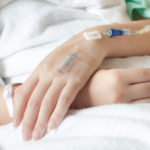
Peripheral intravenous catheters (PIVCs) are small plastic tubes placed in a patient’s vein for the delivery of intravenous fluid and medications. In the emergency department, many patients present with difficult intravenous access and require multiple insertion attempts to successfully place a PIVC. This can be time consuming for clinical staff, costly for hospitals, and painful for patients. Correct device selection is a key strategy to ensure first-time insertion success. This study will recruit 406 adult participants at two emergency departments in order to test if novel PIVCs with a retractable guidewire (AccuCath Ace™ Intravascular Cannula, BD), compared to standard care,…
Principal Investigator:
Ms Hui (Grace) Xu
Amount Awarded: $100,000
Institution: QEII Jubilee Hospital

An Occupational Therapy Pathway for Mild Traumatic Brain Injury ED presentations across the lifespan
Mild Traumatic Brain Injury (mTBI) is a significant burden to Queensland emergency departments (EDs) in adults and children. Between 2019-2020, there were 958 presentations of isolated mTBI to Gold Coast Hospital Health Service EDs, of these 73% presented outside of usual business hours and 26% re-presented within 3 weeks of their initial presentation, complaining of persistent symptoms. The Occupational Therapy (OT) Outpatient Service identified an innovative medical substitution practice model involving specialist follow up for patients to facilitate recovery, link into appropriate specialty referrals where indicated, and prevent ED representations. It is anticipated that the implementation of the OT pathway…
Principal Investigator:
Ms Lauren Heslop
Amount Awarded: $99,423
Institution: Gold Coast University Hospital

Coronary Artery Disease in Aboriginal and Torres Strait Islander People
The current assessment for emergency department (ED) patients with chest pain focuses on the short-term risk of heart attack, to differentiate low risk patients from those at high risk and requiring further treatment. This has been shown to be safe and effective for non-Indigenous patients, however, deaths from heart attack in Indigenous Australians occur, on average, at younger ages than non-Indigenous Australians. Due to the high lifetime prevalence of heart attack in Indigenous Australians, ED investigations that focus on both short- and long-term risks may improve outcomes. Understanding rates of, and the types of patients who have coronary artery disease…
Principal Investigator:
Dr Katrina Starmer
Amount Awarded: $100,000
Institution: Cairns Hospital

Exploring Cultural and Linguistic Diversity in the Emergency Department (CALD ED) study
Providing equitable and appropriate care to populations with cultural and linguistic diversity (CALD) can be a challenge for Emergency Department (ED) providers. This qualitative study aims to explore cultural and linguistic diversity in the ED, to inform evidence-based strategies to support patients from CALD backgrounds and guide subsequent research directions. Researchers will consider individual patients, and their affiliation to people, organisations, their community and culture to explore barriers and facilitators to care delivery from the perspective of clinicians (doctors and nurses) and patients from CALD backgrounds. The study involves collaboration with health and community partners, and a research team largely…
Principal Investigator:
Dr Ya-Ling Huang
Amount Awarded: $72,609
Institution: Gold Coast Hospital and Health Service

EEG in TRaumatic brAin INjury (EnTRAIN)
Head injury results in a high degree of ongoing disability. Risk of Traumatic Brain Injury (TBI) is higher in the 15-19 and 75+ age groups with older Australians having a three times greater incidence compared to the general population (Pozzato, Tate, Rosenkoetter, & Cameron, 2019). There are two distinct aspects to a severe head injury - the primary injury and the secondary injury that occurs as a result of deranged brain functioning. Treatments are targeted at minimising the damage occurring during the secondary stage and to protect damaged brain tissue by optimising blood flow, oxygen delivery and reducing the metabolic…
Principal Investigator:
Dr Wayne Loudon
Amount Awarded: $86,623
Institution: Queensland Ambulance Service
> JumpStart

Communities of practice (CoP) are widely used to strengthen and enhance healthcare, by generating and sharing knowledge and improving organisational performance. In Australia CoPs have been used in fields such as healthcare improvement, mental health and mental health literacy, and workplace health and wellbeing and more recently in response to COVID 19. This project will assess the possible scope for a CoP, and the extent to which a CoP might find support among collaborating service organisations, to focus attention on issues surrounding emergency mental health presentations to hospital emergency departments (EDs) in north Queensland.
Principal Investigator:
Dr Richard Stone
Amount Awarded: $39,596
Institution: Cairns Hospital

Buddy-up: research reach, adoption, and implementation
The “Buddy Study” funded in the EMF grant round 25 showed a common type of hand fracture can be treated without a plaster – a finding that if applied broadly could result in patients returning to work faster and significant healthcare savings. However, since the study was published in 2019 it is unclear to what degree there has been a change in how clinicians actually treat this fracture. This follow up study will explore factors related to research reach, adoption, and implementation at two hospitals in Queensland to 1) inform a strategy to implement knowledge related to hand fractures and…
Principal Investigator:
Dr Eve Purdy
Amount Awarded: $11,470
Institution: Gold Coast University Hospital
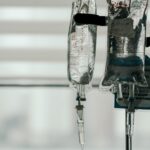
Cellulitis in the emergency department
Cellulitis is an infection of the skin and underlying soft tissues and leads to redness, pain and sometimes fever. Once diagnosed, the emergency doctor needs to decide an appropriate type and dose of antibiotic and decide to give it orally (tables/capsules) or intravenously (via a drip). Despite this being a common diagnosis in the ED, guidelines are not based on high-quality evidence making it difficult for doctors to make evidence-based choices and there is wide variation in how cellulitis is treated. This prospective cohort management study aims to describe the ED management and clinical outcomes of adult patients with cellulitis.
Principal Investigator:
Dr Rachael Nightingale
Amount Awarded: $39,792
Institution: Gold Coast University Hospital

Subculture: Investigating the frequency and outcomes of subsequent blood cultures
Blood cultures are tests performed to identify whether patients have pathogens in their blood, such as bacteria and fungi. Emergency clinicians frequently order blood cultures to prescribe appropriate antibiotics for patients. Blood cultures are particularly important to rapidly identify and treat severe infection. For test accuracy, the best time to collect blood cultures is before a patient has received an antibiotic. However, patients with severe infections may have multiple sets of blood cultures taken over several days. It is unknown whether taking multiple blood cultures improves patient care. This study will investigate how many patients have repeat blood cultures and…
Principal Investigator:
Ms Angela Hills
Amount Awarded: $36,920
Institution: Royal Brisbane & Women's Hospital

Extent of self-harm behaviour presenting to Queensland ED with mental health problems
In 2018, there were 3046 deaths by suicide in Australia. Suicide was the leading cause of death among people age 15-44 in 2016-2018. In Queensland, rates remain highest in young men, particularly in rural areas. The emergency department (ED) can be the only option for people in a mental health crisis. Presentations with self-harm and attempted suicide are recognised high-risk events for subsequent suicide. This data-linkage study is the first of its kind in Queensland, examining ED presentations with self-harm between 2012 and 2017, utilising data from a collaboration examining broader mental health presentations. This ED data will be ‘linked’…
Principal Investigator:
Dr Richard Pellatt
Amount Awarded: $37,816
Institution: Gold Coast University Hospital
> Emerge

Falls in the elderly community-dwelling population are a common presentation to Australian Emergency Departments (ED). The Australian Institute of Health and Welfare reported an estimated 125,000 people aged 65+ were hospitalised due to falls in 2016/17. Fallers presenting to the ED that are elderly and frail, may then be discharged directly home. The Clinical Frailty Scale (CFS) has been widely used and is associated with mortality, comorbidity, increased length of stay and falls (Church 2020). Despite its expansive utilisation, no studies have assessed the correlation of CFS scores with re-presentation to the ED following a fall. Improving the ability to…
Principal Investigator:
Ms Loren Barton
Amount Awarded: $10,000
Institution: QEII Jubilee Hospital

Stroke is a leading cause of death and one of the most common causes of disability in Australia. For ischaemic strokes occurring secondary to a large vessel occlusion (LVO), mechanical thrombectomy is an effective intervention, with the outcome largely dependent on time to thrombectomy. This study will analyse the assessment, management, and clinical outcomes of patients presenting to the ED with acute stroke, with a particular focus of those undergoing mechanical thrombectomy. Researchers aim to determine variability of workflow and decision-making processes that may occur after-hours. Based on current literature, variability may have a corresponding deleterious effect on patient outcomes.…
Principal Investigator:
Dr Peter Del Mar
Amount Awarded: $10,000
Institution: Royal Brisbane & Women's Hospital

Staff experiences of wellness activities at a major regional Queensland ED
Healthcare in general and Emergency Departments (ED) in particular are stressful environments associated with excessive work demands, long hours and often limited support. These pressures are compounded by staff shortages, fiscal constraints and increased ED presentations and patient acuity. Against this background where resources are so stretched, the COVID-19 pandemic poses intense and prolonged pressure. The cumulative impact of chronic stress adversely affects the physical, mental, and social wellbeing of ED staff, leading to burn-out and to difficulties with staff recruitment and retention, decreased morale and job satisfaction. Promoting staff wellness may enhance their ability to cope with occupational stress…
Principal Investigator:
Dr Rajesh Sehdev
Amount Awarded: $9,961
Institution: Townsville University Hospital
> Capacity Building
Rural and remote
> Trauma Care in Regional Rural and Remote Qld
> Trainee
> Staff Specialist
> Special Funding Round COVID-19
> Rural and Remote Research Program
> Research Scholarship
> Research Capacity Building
> Project
> Program
> Patient Flow
> Leading Edge
> JumpStart
> Emerge
> Capacity Building
Queensland
> Trauma Care in Regional Rural and Remote Qld
> Trainee
> Staff Specialist
> Special Funding Round COVID-19
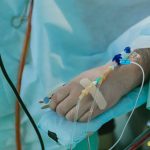
Can mobile robotic telepresence help clinicians safely deliver care to ED patients?
COVID-19 has impacted healthcare provision in Australian emergency departments (EDs). Infection control precautions, including isolation of patients with respiratory symptoms and methodical use of Personal Protective Equipment (PPE), are of paramount importance to reduce the risk of transmission within the healthcare setting. Patients presenting to Australian EDs with epidemiological or clinical features suggesting risk of COVID-19 illness are isolated into a physically separate, high risk-zone (HRZ) within the ED. Entry into HRZ is restricted to essential staff wearing appropriate personal PPE. Consequently, interactions between patients and clinicians, particularly allied health, are limited. Mobile robotic telepresence (MRT) has the potential to…
Principal Investigator:
Dr Mark Baldwin
Amount Awarded: $21,865
Institution: Royal Brisbane & Women's Hospital

SARS-CoV2 infection and immunity in frontline hospital staff during the COVID-19 pandemic
Health workers are at increased risk of exposure and infection with severe acute respiratory syndrome coronavirus 2 (SARS-CoV2). The implications of healthcare worker infection are wide-reaching and impact not only the worker, but also have implications for nosocomial spread in the pre-symptomatic phase and depletion of the skilled workforce required to manage an increased volume of presentations. Front-line health care workers represent a unique cohort to follow for trends in SARS-CoV-2 infection, immune response and antibody production as well as monitoring for re-infection. Understanding the implications of staff infection on the potential for long-lasting immunity is of key significance to…
Principal Investigator:
Dr Megan King
Amount Awarded: $ 52,493
Institution: Gold Coast University Hospital
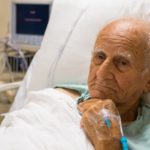
Patterns of QLD ED presentations for older adults in three time periods: pre, peri and post COVID-19
Since COVID-19 was declared a pandemic by the World Health Organization (WHO), the elderly population globally have been identified as a vulnerable group, yet there is limited literature exploring the effect of pandemics on Emergency Department (ED) presentations in this cohort. Healthcare systems have rapidly adapted and made changes to prepare for a potential healthcare crisis that has largely targeted our frail older population. The impact of the pandemic and changes in health care delivery need to be evaluated, to ensure the measures taken did not have unforeseen negative consequences and subsequent positive consequences. This research aims to describe the…
Principal Investigator:
Dr Cassanne Eccleston
Amount Awarded: $37,431
Institution: Sunshine Coast University Hospital

COVID-19 is an infectious respiratory pathogen with significant capacity to spread within the healthcare environment which has been highlighted by the number of healthcare staff internationally that have died or suffered significant morbidity through transmission while caring for patients. Guidelines recommend distancing between healthcare staff and patients and the need for personal protective equipment (PPE). The majority of hospitalised and unwell patients with COVID-19 will receive some type of respiratory support, however very little is known in regard to how differing devices mitigate or exacerbate spread of respiratory droplets during coughing. Inadequate information has led to restrictions on certain types…
Principal Investigator:
Dr Kevin McCaffery
Amount Awarded: $8,472
Institution: Queensland Children's Hospital

The COVERED COVID study: Comprehensive Outcomes that VERify the impact on EDs from COVID-19
Reports worldwide indicate there has been a change in the cohort of patients seen within hospital emergency departments (EDs) during COVID-19, with fewer presentations for non-COVID symptoms, such as chest pain. This study will evaluate the impact of COVID-19 on Queensland EDs by reviewing the number and nature of patient presentations, and generate a comprehensive statewide evidence-base to understand and manage patients who require emergency care during a global pandemic. It is expected that results will inform future management strategies and guiding documents generated in the event of a ‘second wave’, or other large scale disaster.
Principal Investigator:
Prof Julia Crilly OAM
Amount Awarded: $65,504
Institution: Gold Coast University Hospital
> Rural and Remote Research Program
> Research Scholarship
> Research Capacity Building
> Project

SONIC: Study of Neck Injuries in Children. A PREDICT study
Currently in Australia, children with suspected neck injuries undergo neck scans such as x-rays, computed tomography (CT) or magnetic resonance imaging (MRI). However these scans may carry risks from radiation exposure, and are often associated with discomfort and distress for young patients and the need for sedation. Considerable emergency department time and costs are also associated with these scans and it is unclear when it can be safely avoided. Rules and tools can help doctors decide when scans are necessary. The SONIC study aims to look at whether existing rules for adults are also appropriate for use in children, and…
Principal Investigator:
Dr Natalie Phillips
Amount Awarded: $287,090
Institution: Children's Health Queensland
> Program
> Patient Flow
> Leading Edge

One of the main reasons that acute pain is not well treated in the emergency department (ED) setting is that pain is difficult to measure. While patient-reported outcome measures (PROMS) are commonly used to help guide treatment of pain in settings such as chronic pain care, cancer care and migraine care, there are no similar tools available for patients with acute pain in the ED. Further hampering efforts to provide better ED pain care is poor overall understanding of the numbers and types of patients that experience pain. Since it is a symptom rather than a diagnosis, information about pain…
Principal Investigator:
A/Prof Kevin Chu
Amount Awarded: $97,326
Institution: Royal Brisbane & Women's Hospital
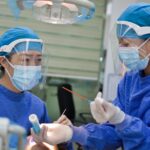
Patients with COVID-19 symptoms are isolated and treated in a high-risk zone (HRZ) within the emergency department. Entry is restricted to essential staff wearing personal protective equipment (PPE). HRZ doctors and nurses typically work 5-10 hour shifts, during which meal and toilet breaks must be taken outside the HRZ. Doffing (taking off PPE) and repeated donning (putting on PPE) are discouraged to conserve PPE. Doctors and nurses often work continuously with minimum breaks because they must doff before exiting and don before entering the HRZ. PPE traps body heat generated by physical activity, adding to mental and physical fatigue, and…
Principal Investigator:
Dr Daniel Bodnar
Amount Awarded: $11,405
Institution: Royal Brisbane & Women's Hospital

Interaction of hyperdynamic septic shock and sepsis endotypes: a new paradigm
Sepsis is an emergency medical condition that is caused by an abnormal response of the body to the presence of harmful microorganisms in the blood. It can lead to injury of body organs, shock and loss of life. Every year, 11 million people worldwide die due to sepsis. Despite advances in the treatment of infections, management strategies for sepsis remain suboptimal. Inadequate understanding of immune system response to severe infection is partly to blame. Patients present to hospital with different signs that may include having warm peripheries and low blood pressure (hyperdynamic shock). Critically ill patients with sepsis who present…
Principal Investigator:
Ms Amanda Harley
Amount Awarded: $99,945
Institution: Gold Coast University Hospital

Emergency department treatment of the drowning victim
Drowning has a major global impact, with approximately 300,000 deaths each year. Yet the treatment of drowning victims has received limited investigation. This lack of evidence means that guidelines for the treatment of drowning victims are largely based on case reports or on other conditions such as acute respiratory distress syndrome (ARDS), on the premise that there may be similarities between the two conditions. We are proposing to create a comprehensive database of information on drowning patients presenting to the emergency departments at the Sunshine Coast Hospital and Health Service. We will utilise a standardised list of data (Utstein-style guidelines…
Principal Investigator:
Ms Kym Roberts
Amount Awarded: $91,468
Institution: Sunshine Coast Hospital and Health Service

Most paediatric inter-facility transfers within Australia are for children that do not qualify for specialist paediatric retrieval services but still require access to specialised paediatric care not offered at the local healthcare facility. Evidence-based transfer guidance for children requiring retrieval are well established. However, for children who do not meet retrieval criteria, there is little guidance for referring and accepting clinicians on how to coordinate safe transfer. Nurse escorts are often deployed but may not be trained sufficiently to deal with arising complications during transfer. Additionally, with the availability and scope of paramedics, the deployment of nurse escorts may not…
Principal Investigator:
Dr Michelle Davison
Amount Awarded: $70,587
Institution: Sunshine Coast Hospital and Health Service
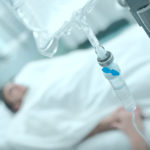
Global estimates suggest that approximately 5 million people die from infection each year. Research into improved management and treatment for patients with infection is essential for reducing mortality. Patients presenting to the emergency department with severe infections are treated with fluids in the vein to maintain optimal blood volume, to keep the heart working properly and tissues well oxygenated. Fluids administered to patients include crystalloids (water-based fluids that include salts and other water-soluble molecules), and albumin (a fluid manufactured from human plasma). Crystalloids are most commonly used by emergency physicians in standard care however initial evidence indicates that albumin may…
Principal Investigator:
Dr Julian Williams
Amount Awarded: $82,402
Institution: Royal Brisbane & Women's Hospital

Watch-house detainee emergency healthcare
In the acute phase of police detention, health concerns can emerge for detainees, especially around drug dependence, mental health conditions, and physical injury. In addition are system complexities including crowding. In the event of an infectious disease outbreak (such as COVID-19), crowded conditions amongst a population with greater underlying burden of disease than the general population creates significant public health and economic concern. Furthermore, access to resources and expertise to manage health concerns in this environment can be challenging, especially in rural areas. Researchers will interview key stakeholders involved with the care delivery and decision making of detainees, to identify…
Principal Investigator:
Prof Julia Crilly OAM
Amount Awarded: $92,098
Institution: Gold Coast Hospital and Health Service

Modelling emergency department patient flow under normal operating conditions and in a pandemic
Patient flow in emergency departments (ED) is impeded when the number of patients exceed physical and/or staffing capacity. This is often referred to as crowding, and is common problem for EDs across the country, adversely impacting patients, staff and the healthcare system. While many strategies have been reported and trialled to mitigate the consequences of crowding and address its causes, there is no one solution that fits all EDs. Researchers propose to develop and test a computer model to mimic the ED, simulating patient flow to provide forecasts that can inform policy makers. This is especially important in periods of…
Principal Investigator:
Dr John Burke
Amount Awarded: $95,770
Institution: Royal Brisbane & Women's Hospital
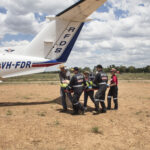
Queenslanders living in regional, rural and remote areas have a higher incidence of traumatic injury and poorer access to health services than their urban counterparts. Researchers propose to undertake a first-of-its-kind study to classify and characterise trauma patients from these areas serviced by Townsville, Cairns, Mt Isa, and Mackay Hospitals over the three-year period 2016-2018. Using patient records, researchers will examine the clinical therapies and interventions used and patient outcomes from point-of-injury through to hospital discharge. The study will capture, collate and compare patient data from Queensland Health, Retrieval Services Queensland (RSQ), LifeFlight Retrieval Medicine (LRM) and the Royal Flying…
Principal Investigator:
Dr Clinton Gibbs
Amount Awarded: $99,505
Institution: Queensland Health Aeromedical Retrieval and Disaster Management Branch
> JumpStart

Lamotrigine Poisoning: an Australian TOxicology Monitoring (ATOM) Study
Lamotrigine is an antiepileptic medication used in the management of seizure disorders and bipolar affective disorder but is being increasingly prescribed for many off-label indications including emotionally unstable personality disorder. In overdose lamotrigine usually causes mild to moderate toxicity, however following large poisonings life-threatening cardiac and neurological effects can occur. There is limited research to guide clinicians both in the assessment and management of lamotrigine poisoning. This is a study observing people who have taken lamotrigine overdoses and will compare the concentration of lamotrigine in their blood with the clinical effects that occur. We want to be able to know…
Principal Investigator:
Dr Katherine Isoardi
Amount Awarded: $28,670
Institution: Princess Alexandra Hospital

Emergency department teams need to perform urgent and high stakes patient care. This requires individual expertise and effective teamwork underpinned by trust, respect and shared values. Psychological safety is a “shared belief held by members of a team that the team is safe for interpersonal risk taking”. The factors affecting the development of psychological safety in emergency department teams are not well understood and we aim to explore this within the emergency departments at Gold Coast Health. Learning more about how to develop psychological safety in teams will inform team training strategies, including but not limited to simulation-based training, and…
Principal Investigator:
Dr Victoria Brazil
Amount Awarded: $18,523
Institution: Gold Coast University Hospital

Pulmonary embolism (PE) is the third most common presenting acute cardiovascular syndrome behind myocardial infarction and cerebral vascular event, resulting in significant harm and death. Different clinical decision-making rules exist to guide clinicians investigating PE, to risk stratify patients based on presenting signs and symptoms; into low, moderate or high-risk. This helps direct further investigations and imaging, such as blood tests (D.dimer), computed tomography pulmonary angiogram (CTPA), and ventilation/perfusion scan (V/Q). Currently, a blood test is a first line test used to help identify which lower risk patients might require further investigation with medical imaging. Medical imaging adds cost, prolongs…
Principal Investigator:
Dr Karen Furlong
Amount Awarded: $21,783
Institution: Caboolture Hospital

Relief of chest pain in the emergency department (RELIEF)
Many emergency department (ED) patients with painful conditions have extensive delays to receive pain relief, which may result in unnecessary discomfort and an extended length of stay. This study will focus on how long patients who present to the ED with chest pain wait for adequate pain relief. This study is important for improving patient comfort and health service outcomes.
Principal Investigator:
Ms Emily Brownlee
Amount Awarded: $16,198
Institution: Royal Brisbane & Women's Hospital

Emergency department waiting time predictions in real-time
Emergency department (ED) waiting times are a significant predictor of the patient experience. Simple prediction methods, such as rolling average, are used by hospitals in Australia to predict waiting time for patients. Although this approach is inexpensive to implement, the forecasts have limited accuracy and consequently most Australian hospital EDs do not report expected waiting times to the public. A solution that is capable of sourcing data from ED information systems and feed it into prediction models to generate waiting time forecasts would bring practical benefits for staff and patients. There is also potential to assist clinicians and nurses to…
Principal Investigator:
Dr Andrew Staib
Amount Awarded: $36,733
Institution: Princess Alexandra Hospital
> Emerge
> Capacity Building
Rural and remote
> Trauma Care in Regional Rural and Remote Qld
> Trainee
> Staff Specialist
> Special Funding Round COVID-19
> Rural and Remote Research Program
> Research Scholarship
> Research Capacity Building
> Project
> Program
> Patient Flow
> Leading Edge
> JumpStart
> Emerge
> Capacity Building
Queensland
> Trauma Care in Regional Rural and Remote Qld
> Trainee

Prospective Observational study of cannulation of Kids in the Emergency (POKIE)
Paediatric peripheral intravenous cannula (PIVC) insertion is a frequently performed procedure in the emergency department (ED), which can result in significant distress for both the child and caregiver, particularly when there are multiple attempts. Children with difficult intravenous access (DIVA) are generally poorly recognised but several studies have developed prediction tools. Furthermore, the use of ultrasound (US) has been demonstrated to improve the success rate of paediatric DIVA patients when used as an adjunct. This research will shine a spotlight on current practice in the largest mixed ED in Queensland, which aims to determine factors contributing to paediatric DIVA patients…
Principal Investigator:
Dr Lucy Dunstan
Amount Awarded: $27,128
> Staff Specialist
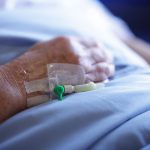
People with type 1 diabetes (T1D) require ongoing insulin administration. Insufficient administration results in hyperglycaemia and then diabetic ketoacidosis (DKA) which, if not treated urgently, can lead to death. It is vital that all people with T1D have timely access to acute care advice and service delivery. Across Australia, DKA is the cause of a significant and increasing number of hospitalisations, especially when considering socioeconomic disadvantage. This 2-phase project first collected retrospective data from clinical record to identify which factors are associated with poor outcomes for people with T1D presenting Caboolture Hospital ED with DKA. The research team then conducted…
Principal Investigator:
Dr Sean Clark
Amount Awarded: $64,314
Institution: Caboolture Hospital

An evaluative study of a collaborative ED mental health program
Mental health is a nationally recognised priority area and significantly contributes to the burden of illness in the Australian community, with almost 50% of people aged over 16 experiencing a mental illness at some point in their life. Coordinating treatment and support for people with mental illness is a key priority area in the Fifth National Mental Health and Suicide Prevention Plan and is a key priority indicator. Over the last decade several models of mental health service delivery have evolved in response to the need for specialised mental health assessment and care in EDs as client numbers and acuity…
Principal Investigator:
Dr Barrie Field
Amount Awarded: $96,676
Institution: Sunshine Coast University Hospital

Patterns of prescription opioid use following ED presentation for minor road traffic crash injury
Australia is five years behind the US’ opioid epidemic (>15,000 US deaths/year). General Practitioners and EDs frequently prescribe opioids for isolated musculoskeletal pain (e.g. “whiplash”) from RTCs, but this potentially inappropriate opioid prescribing likely leads to unnecessary opioid exposures. In the last decade, opioid overdoses in Australia have more than doubled. 75% of opioid overdose deaths involve prescription opioids; annual death rates exceed road traffic deaths. Emergency Departments (EDs) commonly prescribe opioids on discharge for patients with non-serious road traffic crash (RTC) injury. This potentially compromises recovery and contributes to continued opioid use and potential misuse in the community. The…
Principal Investigator:
Dr Siegfried Perez
Amount Awarded: $99,513
Institution: Logan Hospital
> Special Funding Round COVID-19
> Rural and Remote Research Program
> Research Scholarship
> Research Capacity Building
> Project

Coronary Artery Disease in Aboriginal and Torres Strait Islander People
Aboriginal and Torres Strait Islander people die from heart attacks at younger ages than non-indigenous Australians. The factors that increase risk of death from heart attack in young Aboriginal and Torres Strait Islander people are unknown. Most patients who present to an Emergency Department (ED) with chest pain do not have a heart problem but all are assessed for their risk of having a life-threatening cause, such as heart attack. The level of risk determines which tests are performed so that a final diagnosis can be obtained as quickly as possible. Due to the lack of knowledge about risk factors…
Principal Investigator:
Dr Katrina Starmer
Amount Awarded: $115,000
Institution: Cairns Hospital

Better ways of pain management in adults with hip fractures
Hip fractures are extremely painful yet medications which are usually used to manage the pain can have significant complications, particularly in frail individuals. Numbing medications injected into the groin on the side of the hip fracture have been shown to decrease pain, confusion and chest infections in patients with hip fracture awaiting an operation. It is usual for most patients presenting to emergency departments with a hip fracture to get a single injection of numbing medication. What isn’t known is whether multiple regular doses of numbing medications injected regularly via a plastic tube in the groin are more effective than…
Principal Investigator:
Dr Kate Hooper
Amount Awarded: $82,872
Institution: The Townsville Hospital

Using bedside ultrasound to diagnose forearm fractures in children
This is a multicentre, open-labelled diagnostic randomised controlled trial to comparing the use of portable ultrasound and x-ray imaging to diagnose a buckle fracture in children. The trial will determine if there are differences in functional outcomes, patient and care-giver preferences, and health system benefits. Children frequently present to the emergency department with forearm injuries and often have an x-ray to assess if there is a fracture. Due to the soft and plastic nature of the bones in young children, injuries can cause their bones to bend, known as a buckle fracture. Bedside ultrasound is a test that emergency practitioners…
Principal Investigator:
Dr Peter Snelling
Amount Awarded: $159,458
Institution: Gold Coast University Hospital
> Program
> Patient Flow
> Leading Edge

Understanding end-of-life care for older people presenting to the ED
People aged ≥65 years are over-represented in the emergency department (ED) population and some, often with serious chronic disease, present in the last moment of their life. For many reasons the ED can be a challenging place to provide EoL care. The overarching aim of this study was to estimate the magnitude of the need for care at the end of life (EoL) for older people in the ED, and to describe care delivery practices, processes and outcomes for older people who present to the ED requiring EoL care. To address this aim, two phases were developed.
Principal Investigator:
Dr Nemat Alsaba
Amount Awarded: $88,357
Institution: Gold Coast University Hospital
Providing a safe and efficient method of chest pain assessment
In this project we will evaluate a new pathway for assessing chest pain in the emergency department. The pathway is designed to reduce the costs of managing patients at low-risk of heart attack without compromising patient safety. The cost savings are estimated to be around $95 million if implemented Australia-wide, with the bulk of the cost reduction being through decreased length of stay in the emergency department. The new pathway will be implemented at three Queensland hospitals. Data collected before and after the implementation of this pathway will be used to assess 1) whether it results in a shorter length…
Principal Investigator:
A/Prof Jaimi Greenslade
Amount Awarded: $93,240
Institution: Royal Brisbane & Women's Hospital

Reaction of Emergency Services uPON Disasters in Queensland
From a health perspective, a disaster overwhelms the normal operating capacity of a health service, where an outside health response is required to restore and maintain the normal day-to-day health services and standards of care for the disaster-affected community. The Australian healthcare system is tested annually with disasters of a conventional nature (e.g., floods, cyclones, bushfires), however, the Australian healthcare system has not been recently tested by non-conventional disasters such as Chemical, Biological, Radiological, Nuclear, and explosive (CBRNe) disasters. As a result, the ability to determine the healthcare system response is difficult. Further, there is no research specific to the…
Principal Investigator:
Ms Sarah Weber
Amount Awarded: $62,959
Institution: Princess Alexandra Hospital
> JumpStart

Can assessment of parental concern improve sepsis recognition in children?
Sepsis is devastating infection, leading to organ dysfunction. Sepsis kills more children in Australia than road traffic accidents. One out of three survivors will suffer from long-term health problems. Faster recognition of sepsis can save lives. However, recognising sepsis in children can be difficult, as children with sepsis initially present with symptoms similar to common infections. Currently, the recognition of sepsis is based on physician assessment of patients, and laboratory tests. Sadly, a common finding in Coroner`s investigations of sepsis deaths is that parents represented several times to health-care facilities, stating their concerns that “something is wrong” with their child.…
Principal Investigator:
Ms Amanda Harley
Amount Awarded: $39,685
Institution: Gold Coast University Hospital, Queensland Children's Hospital

uSing Meditation App to Reduce ED occupational sTress (SMART) trial
Our study aims to test whether a mindfulness program delivered by a smartphone app can reduce occupational stress levels among Emergency Department (ED) staff. This study will recruit staff at two regional EDs. Staff will practice short session mindfulness daily, for four weeks, using a smartphone meditation app. The study will determine if, by using the app, staff levels of occupational stress are reduced and overall wellness increased. The levels of stress reduction will be compared before and after the intervention. Working in an ED can be stressful. It has been suggested that up to half ED doctors and nurses…
Principal Investigator:
Ms Hui (Grace) Xu
Amount Awarded: $13,650
Institution: Logan Hospital

Clinician decision making in peripheral intravenous cannulation in emergency settings
Peripheral intravenous cannulation (PIVC) is a vital part of modern medicine, however the use of cannulas has become prolific, with many never used. The patient risks that are associated with PIVC are well documented, including pain and infections, which can be severe and lead to death. Reducing the rate of idle PIVCs (inserted but never used) may reduce the overall rate of risks, side-effects and infections associated with PIVC, but may also lead to patients who require PIVC not receiving one. This study aims to describe: I) the proportion of PIVCs placed that do not get used within 24 hours…
Principal Investigator:
Mr Hugo Evison
Amount Awarded: $34,794
Institution: Queensland Ambulance Service
> Emerge
> Capacity Building

Capacity Building Grant – third year: The Prince Charles Hospital
This grant provides a 'third-year' extension of funding as part of a 2011 EMF Capacity Building grant awarded to The Prince Charles Hospital Emergency Department. With the Capacity Building grant, the Department has engaged in more than 20 research projects. The majority involve significant input from the Hospital's emergency clinicians, who are working in collaboration with other Queensland and interstate emergency department and/or academic institutions such as CSIRO.
Principal Investigator:
Dr Frances Kinnear
Amount Awarded: $20,000
Institution: The Prince Charles Hospital
Rural and remote
> Trauma Care in Regional Rural and Remote Qld
> Trainee
> Staff Specialist
> Special Funding Round COVID-19
> Rural and Remote Research Program

Implementation of Nasal High Flow: A Remote Context
In this study, the clinician-researchers are exploring whether nasal high flow (NHF) therapy can be safely and effectively used to improve health outcomes for infants with bronchiolitis in isolated remote communities, in particular for remote Indigenous Australians who have a higher incidence rate of bronchiolitis than non-Indigenous Australians. There is a desire by clinicians to implement NHF in remote areas, but this should undergo similar scientific scrutiny as previous published data. NHF is a respiratory support system that provides support for people with respiratory conditions and is applied by high flow oxygen through nasal prongs. The therapy can avoid an…
Principal Investigator:
Mrs Sally West
Amount Awarded: $50,000
Institution: James Cook University
> Research Scholarship
> Research Capacity Building
> Project
> Program
> Patient Flow
> Leading Edge
> JumpStart
> Emerge
> Capacity Building
Queensland
> Trauma Care in Regional Rural and Remote Qld
> Trainee
> Staff Specialist

Improving blood culture collections in the emergency department
The primary aim of this study is to assess the effectiveness of an intervention designed to improve the quality of blood cultures collected in a busy emergency department. Blood cultures are tests that are frequently ordered by emergency doctors to detect and identify bacteria present in the blood of patients who are unwell. The test requires a sample of blood to be collected from the patient. Like many tests, the quality of the results is related to the quality of the sample collection process. Several factors may influence the quality of sample collection and increase the chance of sample contamination.…
Principal Investigator:
Dr Julian Williams
Amount Awarded: $81,614
Institution: Royal Brisbane & Women's Hospital

Can children be sedated effectively with only one needle?
Procedural sedation in emergency departments is performed on a daily basis. The current management plan arguably inflicts unnecessary pain and distress on children. This open label, multicenter, randomised control trial is investigating whether paediatric procedural sedation can be achieved with just one needle. The research team’s focus is the on determining the best outcome for the child in procedural sedation, prioritising psychological as well as medical consequences.
Principal Investigator:
Dr Megan King
Amount Awarded: $60,056
Institution: Gold Coast University Hospital

Understanding why aged care residents are transferred to the ED
In Australia, the existing model of emergency department care is struggling to cater for the needs of the older population. A large proportion of older patients arriving at emergency departments are from residential aged care facilities (RACFs). Nursing staff in RACFs often participate in decision making pertaining to transfer of residents to the emergency department, but very little research has been done on the decision making involved in this process. The mixed methods study will engage with RACF nursing staff to understand their decision to transfer a resident, their perception of communication with the emergency department, and the services that…
Principal Investigator:
Dr Sean Clark
Amount Awarded: $55,206
Institution: Caboolture Hospital

Junior doctors at triage improve patient flow in the ED
Introducing a novel model of care to the emergency department may provide significant reductions in key performance indicators, such as patient length of stay, or the National Emergency Access Target (NEAT). In previous studies, researchers have found that rostering a physician to work at triage can lead to significant improvements on a range of metrics, including time to treatment, patient length of stay and rate of patients who left before receiving treatment. However, in a regional hospital where staffing numbers and budgets are under pressure this model may not be possible. The objective of this study is to implement a…
Principal Investigator:
Dr David Johnson
Amount Awarded: $47,063
Institution: Hervey Bay Hospital
> Special Funding Round COVID-19
> Rural and Remote Research Program
> Research Scholarship

Patient health records contain a significant amount of information through each episode of care provided at a healthcare facility. However, due to the unstructured nature of the clinical information in each record, the clinical data is not readily accessible for research or administrative use unless an expensive and time-consuming manual process is used. Methods of data extraction through various algorithms are available but require training and testing a dataset of annotated health records. To address this issue, my key aim is to generate structured clinical data from previously inaccessible and unstructured electronic records. I am attempting to develop a process…
Principal Investigator:
Dr Siegfried Perez
Amount Awarded: $150,000
Institution: Logan Hospital

Mixed methods study of the Geriatric Emergency Department Intervention (GEDI)
As the population of Australia grows the percentage of those aged >65years is expected to double over the next 30 years. This will lead to more patients presenting to emergency of which a significantly larger portion will be frail and/or from residential care facilities (RCF). This vulnerable population is at significant risk of hospital acquired complications including acute confusion, falls, and infections if they suffer prolonged stays in the emergency department (ED) or on admission to hospital. The GEDI program is an innovative nurse led intervention designed to improve emergency care of frail older persons who develop an acute medical…
Principal Investigator:
Dr Elizabeth Marsden
Amount Awarded: $37,500
Institution: Sunshine Coast University Hospital
> Research Capacity Building
> Project

Early resuscitation in paediatric sepsis
Sepsis is a leading cause of death and disability in children, globally accounting for more than one million childhood deaths per year. Recommended sepsis treatment currently consists of intravenous antibiotics and aggressive fluid boluses followed by inotropes and consideration for intravenous steroids. However, the evidence for interventions other than antibiotics is limited and aggressive fluid administration may be associated with harm. Therefore, fluid-sparing algorithms using early inotropes to treat shock have been proposed. Another strategy to hasten shock resolution consists in intravenous steroids, alone or in combination with thiamine and vitamin C, postulated to support metabolic dysfunction in recent studies.…
Principal Investigator:
Dr Megan King
Amount Awarded: $99,975
Institution: Gold Coast University Hospital

Fluid resuscitation in emergency patients with sepsis and hypotension (ARISE Fluids)
The question of fluid volume in resuscitation has been identified as the top priority in sepsis research by emergency physicians in the United Kingdom, Australia and New Zealand. Guidelines and sepsis pathways recommend an initial intravenous (IV) fluid bolus of 30ml/kg isotonic crystalloid for patients with sepsis and hypotension. However, there is a lack of evidence from clinical trials to support this strategy. Both observational data as well as randomised studies suggest there may be harm associated with injudicious use of fluids in sepsis. Since there is equipoise regarding a more liberal or restricted fluid volume resuscitation as first line…
Principal Investigator:
Prof Gerben Keijzers
Amount Awarded: $96,018
Institution: Gold Coast University Hospital

Grass pollen is the major outdoor allergen globally and grass pollen exposure has an important measurable and manageable impact on the medical burden of asthma. We propose investigating the role of allergy status on triggers for asthma in patients visiting hospital emergency departments in two regions of south east Queensland over a two year period, coinciding with NHMRC and ARC funded environmental health research led by collaborator CI Davies. Data on weather and pollen exposure will be integrated with direct assessment of specific IgE profiles and respiratory viral triggers of asthma. Patients, including children over 12 years, presenting with primary…
Principal Investigator:
Dr Frances Kinnear
Amount Awarded: $90,539
Institution: The Prince Charles Hospital

International mass gathering impact on Gold Coast Hospitals’ emergency departments
Queensland is known for its ability to attract mass gathering events of international significance, such as the 2018 Commonwealth Games, 2023 FIFA Women’s World Cup and the 2032 Olympic Games. Such events have the potential to impact the normal operational capacity of our emergency health services. The objective of this study is to describe the impact of the 2018 Commonwealth Games on the emergency departments in the Gold Coast region. This research has two key aims, which align with two discrete but related studies: Study 1 Aim: To describe and determine whether changes in patient, health service, and economic outcomes…
Principal Investigator:
Dr Michael Aitken
Amount Awarded: $40,000
Institution: Gold Coast University Hospital
> Program
> Patient Flow
> Leading Edge

Paediatric Reduction in Emergency Cannula Accidental REmoval Trial – PRECARE trial
The aim of this study is to evaluate securement devices for peripheral intravenous catheters (PIVC) in the paediatric ED to determine which method is most effective for reducing PIVC failure, associated costs, acceptability and patient distress. Infants and children depend on PIVCs for the provision of medical therapy within the emergency department and during hospitalisation. However, PIVC insertion and management is challenging and more than 25% of devices fail. PIVC failure is costly for both the patient and healthcare organisation. Failure may require the child to undergo traumatic reinsertion procedures, delay important medical treatment and prolong length of hospital stay.…
Principal Investigator:
Ms Brooke Charters
Amount Awarded: $96,034
Institution: Logan Hospital

Valuing patients’ experience in the emergency department
Improving patient experiences is part of Queensland’s 2016-2020 Strategic Plan to enable safe, quality healthcare services. Yet, current emergency department(ED) patient experience measures, including the burdensome 82-item Queensland Health (QH) ED patient experience survey, fail to reflect patient preferences for care experiences, inhibiting the design and evaluation of healthcare services that reflect patient preferences, and the delivery of value-based healthcare. The aim of this project is to develop an ED patient experience classification system and accompanying scoring algorithm that can be used to both measure and value patient experiences in Queensland EDs. It will provide a proof of concept for…
Principal Investigator:
Dr David Spain
Amount Awarded: $75,757
Institution: Gold Coast University Hospital

Emergency Examination Authorities and their impacts on North Queensland Hospitals
Emergency Departments (EDs) receive persons suffering major disturbances in their mental capacities, detained and transported by police or ambulance. The Public Health Act 2005 (Qld) (‘PHA’) – amended and in force 5 March 2017 – requires police and ambulance officers to make out an Emergency Examination Authority (EEA) at handover.1 Previously, Emergency Examination Orders (EEOs) were made out under Queensland’s Mental Health Act 2000 (‘MHA’). At handover, police and ambulance officers must make out an EEA. From handover at the ED, the PHA prescribes specific responsibilities, e.g. a doctor or health practitioner must explain to the person that they may…
Principal Investigator:
Dr Richard Stone
Amount Awarded: $92,979
Institution: Cairns Hospital
> JumpStart
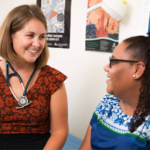
Improving the care of skin infections in the Torres Straits
This research project is looking at cellulitis in the Torres Straits. Cellulitis is a bacterial infection of the skin that requires antibiotics. People with cellulitis usually have an area of red and hot skin and sometimes can have fevers and become really unwell. Germs called Staphylococus aureus and Streptococcus pyogenes typically cause cellulitis. It potentially can cause serious infections and are a common presentation to emergency departments and admission to hospital. In a tropical environment such as the Torres Strait cellulitis is extremely common and contributes to a significant burden on the healthcare system. Often patients present to health care…
Principal Investigator:
Dr Allison Hempenstall
Amount Awarded: $35,329
Institution: Thursday Island Hospital
> Emerge
> Capacity Building

Capacity Building Grant – third year: Royal Brisbane and Women’s Hospital
The Royal Brisbane and Women’s Hospital (RBWH) Emergency and Trauma Centre (E&TC) is committed to research as a way to improve both patient outcomes and the delivery of emergency care services. With the support of competitive grants from funding bodies, the E&TC has rapidly established a reputation for high quality, medically-oriented clinical and health services research. Our capacity and support for such work has resulted in international collaborations, publications in leading journals and translation of findings into clinical practice with tangible benefits to both patients and health services. Despite these successes, several years ago we recognised that there were still…
Principal Investigator:
Prof Louise Cullen
Amount Awarded: $70,000
Institution: Royal Brisbane & Women's Hospital
Rural and remote
> Trauma Care in Regional Rural and Remote Qld
> Trainee
> Staff Specialist
> Special Funding Round COVID-19
> Rural and Remote Research Program
> Research Scholarship
> Research Capacity Building
> Project
> Program
> Patient Flow
> Leading Edge
> JumpStart
> Emerge
> Capacity Building
Queensland
> Trauma Care in Regional Rural and Remote Qld
> Trainee

Point of care lung ultrasound in paediatric respiratory presentations
Emergency department physicians with no prior specialised ultrasound training can be taught to reliably identify bronchiolitis, pleural effusions, pneumothorax and pneumonia, in children presenting with cough, shortness of breath and hypoxia through the use of lung ultrasound after a brief training. In this study, we are assessing the effectiveness of trainees performing a lung ultrasound examination of children, capturing their images and recording their findings. No clinical decisions will be made based on these findings without consultation with the consultant on duty. We will consider to what extent the teaching was successful and try to determine whether the teaching resulted…
Principal Investigator:
Dr Volha Pankevich
Amount Awarded: $8608
Institution: Logan Hospital

Antibiotics in the Emergency Department
In the Emergency Department (ED) deciding who does and who does not need antibiotics can be difficult. There is no quick test that an Emergency doctor can perform that accurately tells them who needs antibiotics or what type of antibiotic to prescribe. Our study aims to find out how many patients are given antibiotics in the ED and what proportion of those antibiotics are not required or have been given incorrectly (incorrect type or dose). Our study also aims to identify factors that are associated with poor antibiotic choices, including doctor experience and time of antibiotic prescription.
Principal Investigator:
Dr Kerina Denny
Amount Awarded: $24,131
Institution: Gold Coast University Hospital
> Staff Specialist

Developing a regional strategy for reducing non-urgent emergency department presentations
Many people who attend hospital emergency departments (EDs) are triaged as having non-urgent concerns, which could be managed by other health services such as the GP. The way regional health services are designed can contribute to the rate of non-urgent presentations in EDs. The impact of non-urgent patients in EDs can result in crowding, ambulance diversion and access block, which are linked to poorer patient outcomes, increased morbidity and staff burnout. While some recognition of this problem exists nationally, many policies or strategies implemented to reduce the incidence of these presentations have not been evidence-based, effective or economically evaluated. We…
Principal Investigator:
Dr Rose Jones
Amount Awarded: $69,603
Institution: Ipswich Hospital

Examining the effectiveness of Brown snake antivenom
The amount of Brown snake antivenom required to properly neutralise the venom delivered in a brown snake bite remains controversial. Using appropriate amounts reduces the risks and side effects of antivenom, while optimising its positive effects. One of the major clinical symptoms of Brown snake bite is massive bleeding. We aim to use a novel method for analysis of blood clotting (the ROTEM analyser) to study the effects of Brown snake venom on blood clotting and how different doses of antivenom affect this. This information may enable us to develop a simple point of care test to determine the optimal…
Principal Investigator:
Dr Adam Holyoak
Amount Awarded: $46,000
Institution: Townsville University Hospital

Dermatology in the Emergency Department
Patients presenting to the Princess Alexandra Hospital Emergency Department with dermatological conditions present a significant demand on resources. It is estimated that in many Emergency Departments (ED) at least one in 25 patients present with a skin condition. Many dermatological presentations may be better managed in an alternative environment either because they are non-urgent or require more specialised and expert care. This project aims to better understand the presentation of skin conditions to a large adult Queensland ED. The research will describe the current diagnosis and management of this cohort to the ED, assess the resource implications and understand the…
Principal Investigator:
Dr Tina Bazianas
Amount Awarded: $16,448
Institution: Princess Alexandra Hospital
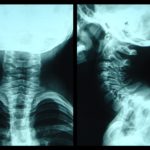
The impact of imaging referral guidelines on unnecessary x-ray examinations
In this project, the research team is investigating the effect, on x-ray request justification, of educating referrers and radiology staff on the existence and use of the Government of Western Australia’s Diagnostic Imaging Pathways. The project aims to improve clinical information provided on medical imaging requests, to assist in the assessment of justification, and reduce the number of unjustified examinations being performed. The expected impact of this project is in the removal of unnecessary x-ray examinations which provide little or no benefit to the patient. This will also have a benefit of reduced radiation exposure to patients and improved access…
Principal Investigator:
Dr Sarah Boxall
Amount Awarded: $57,093
Institution: Mackay Base Hospital

Reducing avoidable COPD emergency presentations: An integrated cross-health service initiative
Almost 3% of consumers of healthcare services in the Darling Downs, West Moreton and Gold Coast (Including Robina) regions are estimated to have Chronic Obstructive Pulmonary Disease (COPD); which is somewhat higher than the state average of 2.4%. COPD is the second leading cause of avoidable hospital admissions. Anecdotal evidence indicates continued over-utilisation of frontline resources (e.g., Emergency Department [ED]), and potential gaps in outreach services (e.g. underutilised services). This project will inform the implementation and evaluation of referral treatment initiatives (e.g., anxiety management, smoking cessation referral, and quality intra-professional care [IPC] programs), based on identified causal factors.
Principal Investigator:
Dr Alex King
Amount Awarded: $67,000
Institution: Toowoomba Hospital

Single centre validation of the Canadian Syncope Risk Score
Syncope is a transient loss of consciousness with full recovery, and is a common presenting problem to the emergency department (ED). Most patients presenting with syncope have a benign cause, but others may be at risk for serious adverse outcomes. The problem is that there is currently no validated tool for knowing which patients are at risk and which can be safely discharged. Several clinical prediction rules have been developed over the years, however the sensitivity and specificity of these rules vary. This has led to an over-admission of patients who could otherwise be safely discharged, based on clinician discretion.…
Principal Investigator:
Dr Jason Chan
Amount Awarded: $59,804
Institution: Redcliffe Hospital

Medication-related emergency department presentations
In Australia, medication errors result in more than 400,000 visits to general practitioners per year, however the number of patients who present to hospital due to medication-related harm is unclear. Previous Australian and international research suggests that at least 2% of emergency department (ED) presentations are due to medication-related harm and up to one quarter of those patients require admission to hospital. Importantly, the majority of such presentations are potentially preventable, which means that interventions that target medication safety in the community and adverse events that result in ED presentations could improve patient safety and quality of life, and reduce…
Principal Investigator:
Professor Louise Cullen
Amount Awarded: $31,410
Institution: Royal Brisbane & Women's Hospital

How are we treating severe childhood asthma in Australasia?
Most children with asthma presenting to an emergency department (ED) are managed with inhaled medications and oral steroids. Infrequently, those children that are very unwell may require assistance with their breathing, or intravenous medication. Currently, there is minimal information to guide clinicians on which treatment to choose for severe acute asthma. It is not known which is most effective and all have side-effects. Studies demonstrate significant variation in practice, while existing Australasian data is approximately 10 years old. This project aims to determine current management practices for children with severe acute asthma and/or wheeze; how common the condition is, how…
Principal Investigator:
Dr Ben Lawton
Amount Awarded: $69,444
Institution: Logan Hospital

Domestic and family violence screening in the emergency department
Domestic and family violence (DFV) against women is the number one cause of hospitalisations in Australian girls and women aged 15-54 years. It is also the number one cause of death and disability in women aged 15 to 44. Although most victims of fatal DFV access health services in the 24 months prior to their deaths, many victims living with DFV go unnoticed in the community. Health care providers are well placed to identify DFV victims and refer them to appropriate services. The ED has been described as a good place to undertake identification of DFV victims in several published…
Principal Investigator:
Dr Thomas Torpie
Amount Awarded: $65,856
Institution: Gold Coast University Hospital

Randomised controlled trial of two antidote regimens for paracetamol overdose
Paracetamol is the commonest medications taken in overdose and is the leading cause of acute liver failure in the developed world. The antidote, acetylcysteine, which replenishes liver glutathione was developed in the 1970’s. However the regimen (20 hours duration) was never subjected to either a randomised controlled trial or any dose ranging studies. The regimen gives a large loading dose and the remainder of the infusion (20 hours) is given to mirror the time taken for paracetamol to be cleared by the liver. This time is only an average and depends on the degree of liver damage. For normal livers…
Principal Investigator:
Dr Katherine Isoardi & Dr Colin Page
Amount Awarded: $43,778
Institution: Princess Alexandra Hospital
> Special Funding Round COVID-19
> Rural and Remote Research Program
> Research Scholarship
> Research Capacity Building
> Project

Evaluation of the Geriatric Emergency Department Intervention (GEDI) implementation
Advances in health have led to populations living longer with more chronic disease and frailty. Frail older people presenting to emergency departments (EDs) have special needs that are often overlooked. In response, the innovative Geriatric Emergency Department Intervention (GEDI) was developed by clinicians at Nambour Hospital, Queensland. GEDI is a unique nurse-led, physician-championed model of service delivery which facilitates advanced assessment tailored to the individual, nurse-initiated specialist referral, fast-tracking of care through the ED and appropriate safe discharge planning for persons aged 70 and over, including those from residential aged care facilities. A successful trial in one ED was awarded…
Principal Investigator:
Dr Elizabeth Marsden
Amount Awarded: $100,000
Institution: Nambour General Hospital

Assessing Children’s Head Injury: Variation in CT scan use (APHIRST-Gap)
This study will collect information from the records of 3000 children from 30 hospitals presenting after a head injury in 2016 and will interview staff to look at different factors influencing the care provided. APHIRST-Gap is expected to provide crucial information on scan rates and inform strategies, including national guideline development to standardise and improve the care of children with head injury across Australia and New Zealand. Head injury is a common reason children present to Emergency Departments in Australia and New Zealand. While most are minor the important issue for emergency clinicians is to determine whether a particular child…
Principal Investigator:
Dr Natalie Phillips
Amount Awarded: $62,749
Institution: Queensland Children's Hospital

Preventing chronic pain after whiplash injury
After whiplash injury, half of patients never fully recover. The human and economic cost is enormous, and current mainstay treatments are ineffective. Most recovery, if it occurs, takes place in the first two to three months. This early time period offers a ‘window of opportunity’ to pro-actively intervene and prevent the chronic pain. The Emergency Department (ED) is ideally placed to provide very early intervention. We have shown that upregulation of pain in the central nervous system occurs soon after whiplash injury and predicts poor recovery. We aim to target these central nervous system processes with pregabalin in conjunction with…
Principal Investigator:
Professor Gerben Keijzers
Amount Awarded: $83,639
Institution: Gold Coast University Hospital

Rapid diagnosis of sepsis in acutely ill children
Life threatening bacterial infections such as sepsis are a leading cause of childhood mortality. International authorities recognise the urgent need for better recognition, diagnosis, and management of children with sepsis. Children in regional and remote settings are at particular risk for late or inaccurate diagnosis resulting in worse outcomes. In this study, the researchers are testing the feasibility, performance, time-to-diagnosis, and cost impact of applying the most advanced genomics-based sepsis diagnostic tools. This could lead to better treatment of infections, reduce unnecessary antibiotic use, shorten hospital length of stay, improve patient outcomes, and allow patients and families to be managed…
Principal Investigator:
Dr Peter Snelling
Amount Awarded: $100,000
Institution: Queensland Children's Hospital
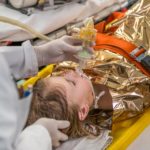
Fibrinogen Early In Severe Trauma in children studY (FEISTY Junior)
Traumatic injuries in children are a leading cause of death and disability in Australia. In high income countries, 40% of child deaths are because of traumatic injuries. Fibrinogen is one of the key clotting factors that need to be replaced in severe traumatic bleeding. Currently, fibrinogen is replaced using cryoprecipitate; a blood product obtained from healthy volunteer donors. This is a precious resource that is stored frozen in the blood bank; it can take a long time to administer and place significant strain on blood banks. Fibrinogen concentrate (FC) is an alternative product used to assist in blood clotting. It…
Principal Investigator:
Dr Christa Bell
Amount Awarded: $100,000
Institution: Gold Coast University Hospital

Data linkage & patient outcome study: Aeromedical services in Central Queensland
The development of linked data from aeromedical retrieval & health system databases will provide improved, value-added insights to patient care and outcome analysis. This first-of-its-kind study seeks to take the next step in patient-centered outcomes research and resource allocation planning by linking together existing, but independent emergency department, aeromedical, hospital and death databases. Our pilot study has linked databases, creating secure & robust infrastructure for future state-wide studies. The aims of the study are: a) Utilise the linked data infrastructure that we’ve created, allowing next phase state-wide replication; describe aeromedical patient outcomes (including length of stay and mortality); understand aeromedical…
Principal Investigator:
Dr Mark Edwards
Amount Awarded: $100,000
Institution: Rockhampton Base Hospital
> Program
> Patient Flow
> Leading Edge
> JumpStart
> Emerge
> Capacity Building

Research capacity building: Redcliffe Hospital
Redcliffe Hospital Emergency Department (ED) has a growing research track record and an increasing number of clinical staff engaging in research-related activities. To capitalise on this burgeoning interest, we will funding a dedicated Clinical Research Coordinator to provide active support, coordination and promotion of both current and future research activities. The aim of our endeavour is to establish research as a core element of ED activity, together with education & training, provision of clinical care and maintenance of standards in healthcare. We intend to conduct our future research under the auspices of leaders and champions representing four thematic headings: 1.…
Principal Investigator:
A/Prof Douglas Morel
Amount Awarded: $108,440
Institution: Redcliffe Hospital
Rural and remote
> Trauma Care in Regional Rural and Remote Qld
> Trainee
> Staff Specialist
> Special Funding Round COVID-19
> Rural and Remote Research Program
> Research Scholarship
> Research Capacity Building
> Project
> Program
> Patient Flow
> Leading Edge
> JumpStart
> Emerge
> Capacity Building
Queensland
> Trauma Care in Regional Rural and Remote Qld
> Trainee
Carotid doppler ultrasound with passive leg raise for fluid responsiveness
Fluid therapy is a valuable entity and a valuable clinical entity. However there is uncertainty regarding the fluid responsiveness of patients, particularly those with severe infections. Potential risks of fluid overload (i.e. too much fluid) exist. Excessive fluid administration is associated with increased morbidity and mortality. Carotid doppler ultrasound and passive leg raise is a way of estimating fluid responsiveness. By using this technique we believe that it will tell us if a patient will tolerate an intravenous fluid bolus of 500ml. The aim of this study is to determine if doppler ultrasound of the common carotid artery blood flow…
Principal Investigator:
Dr Robert Osgood
Amount Awarded: $5,150
Institution: Logan Hospital

Prescribing patterns and communication for oxycodone on ED discharge
Pain is a common symptom in ED patients, and is often the primary reason patients seek emergency medical attention. There are, however, growing public health concerns that opioid medications are being increasingly and excessively prescribed for pain. These medications may have a serious side effect profile including sedation, tolerance, and development of addiction, and may subsequently be diverted in the community for non-medical use. A recent baseline audit of local prescribing records revealed oxycodone, an opioid pain medication, is prescribed in approximately 5% of patients discharged home from this ED (with an annual census of 77,500 presentations). Clinical documentation and…
Principal Investigator:
Dr Rina Savage
Amount Awarded: $34,955
Institution: Royal Brisbane & Women's Hospital
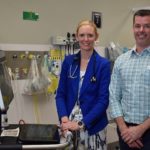
Will a replicable ultrasound training intervention improve intravenous cannulation processes?
Most patients need intravenous access in the emergency department, but many suffer multiple attempts before the health provider is successful. This can cause patient distress and delays the time to potentially life-saving treatments. We believe an ultrasound-guided cannulation training program will enable better recognition of patients with difficult intravenous access and increase use of ultrasound during cannulation, hence decreasing time to cannulation, increasing success rates, and reducing the number of punctures required. In this study, we are examining the current practice of inserting intravenous (IV) cannulas in the Emergency Department at the Gold Coast University Hospital. We will consider how…
Principal Investigator:
Dr Amy Archer-Jones
Amount Awarded: $22,541
Institution: Gold Coast University Hospital
Effect of Buddy Taping vs Plaster in Boxer’s Fractures (5thMC) –Buddy Study.
Fractures of the metacarpal bones are the most common hand injuries. Fractures through the neck of the 5th metacarpal (little finger hand bone) account for the majority of these. They are known as Boxer’s Fractures, as they are often sustained during a punch. Boxer’s fractures are traditionally managed in plaster, but in recent years there has been some suggestion that to simply ‘tape’ the little and ring fingers together will allow similar recovery with the advantage of full mobilisation. Currently there is not enough evidence to recommend one treatment over another. Potential benefits of buddy taping include: earlier return to…
Principal Investigator:
Dr Richard Pellatt
Amount Awarded: $17,425
Institution: Gold Coast University Hospital

Paced Electrocardiogram Requiring Fast Emergent Coronary Therapy (PERFECT) Study
The aim of this study is to assess the performance characteristics of the modified Sgarbossa criteria for diagnosis of ACO in VPR. This is a multi-centre international trial. The number of patients presenting to our Emergency Departments with pacemakers continues to increase. Investigating whether such patients are having a heart attack is challenging. For patients without pacemakers, ECG criteria can be used to identify a subset of patients who are having a heart attack. However, for patients with pacemakers, there are no accurate electrocardiograph (ECG) criteria to diagnose heart attacks. This research has the potential to identify AMI in patients…
Principal Investigator:
Dr Gary Mitchell
Amount Awarded: $16,866
Institution: Royal Brisbane & Women's Hospital
> Staff Specialist
Propofol on trial for headaches in the Emergency Department setting
Headache is a common and frequently disabling clinical disorder that accounts for nearly 2% of all emergency department presentations. Often patients are experiencing a headache that is not responding to commonly available medications. However, there is no good evidence to support which available hospital medications consistently offer effective pain relief to individuals with these types of refractory headache. Understandably this is a challenging scenario in the emergency department setting for both the patient and physician that often leads to inadequate or unsatisfactory symptom relief. In a few small trials, there has been promising evidence that the medication propofol is potentially…
Principal Investigator:
Dr Erik Wood
Amount Awarded: $7,860
Institution: Redcliffe Hospital
A brief psychological intervention to promote recovery after mild traumatic brain injury
Mild traumatic brain injury (mTBI) is a common injury with potentially profound consequences. Although many patients recover within a few days to a few weeks, an estimated 15-40% develop post-concussion syndrome (PCS), which consists of an array of cognitive, emotional, and physical symptoms.(TBI symptoms that persist beyond three months often develop into a chronic, potentially life-long, health problem.) PCS is associated with problems returning to work, social difficulties, higher healthcare utilisation, and poorer quality of life. The mitigation of PCS represents a significant clinical problem. An effective evidence-based early intervention to prevent PCS is sorely needed. There is a growing…
Principal Investigator:
Dr Shane Martin
Amount Awarded: $69,657
Institution: Ipswich Hospital
First aid oxygen treatment of divers with decompression sickness
Decompression sickness (DCS), commonly called the bends, involves formation of gas bubbles in the body following scuba diving. These bubbles can cause a variety of problems, ranging from minor aches and pain, to severe stroke-like symptoms. Providing pre-hospital oxygen therapy at the highest concentration possible provides needed oxygen to body tissues, reduces bubbles and can often relieve symptoms. Oxygen has been shown to reduce the number of hyperbaric treatments a diver with DCS will require so improving pre-hospital oxygen delivery will lead to decreased hospital costs. However, the ideal oxygen delivery system has not been determined. Using new techniques and…
Principal Investigator:
Dr Denise Blake
Amount Awarded: $30,003
Institution: Townsville University Hospital

Evaluating rates of skin colonisation with MRSA or Group A Streptococci
Group A Streptococcal (GAS) is known to be the cause of Acute Rheumatic Fever (ARF) and Chronic Rheumatic Heart Disease (CRHD). Worldwide Community acquired (CA) Methicillin Resistant Staphylococcus Aureus (MRSA) is an increasing problem which has also been identified in Australia since the 1990s. At times, the rates in North West HHS have been as high as 30%. This has implications for both the local HHS and the health system more broadly for patients that then require transfer to other facilities. The purpose of this research is to conduct a snapshot study for the evaluation of rate of skin colonisation…
Principal Investigator:
Dr Ulrich Orda
Amount Awarded: $68,224
Institution: Mt Isa Base Hospital

Ketamine versus propofol in sedation of psychiatric patients requiring retrieval
In this study, we will compare the safety and effectiveness of ketamine and propofol in sedating acute psychiatric patients needing aeromedical retrieval. We believe that this is the first trial of its kind which will elucidate the complications, the safety profile and effectiveness of the two drugs in sedating acute psychiatric patients. The study will be a prospective, open-labelled, randomised controlled trial. Patients will be drawn the Northern Territory and Queensland. Through this study, we will better inform clinicians in their choice of a suitable sedation agent and potential provide an additional sedation choice in aeromedical and other critical care…
Principal Investigator:
Dr Vinay Gangathimmaiah
Amount Awarded: $8,400
Institution: The Townsville Hospital

Is prednisolone an effective treatment for Bell’s Palsy in children?
Bell’s palsy or acute idiopathic lower motor neurone facial paralysis is characterised by sudden onset paralysis or weakness of the muscles to one side of the face controlled by the facial nerve. It is the third most common neurological reason for children to present acutely to hospital. In adults, there is conclusive evidence from two major recent trials that a short course of prednisolone, a cheap, widely available and safe steroid, can significantly increase the number of Bell’s palsy patients who completely recover. While the medical problems associated with Bell’s palsy are similar, in children there is no good evidence…
Principal Investigator:
Dr Shane George
Amount Awarded: $68,179
Institution: Gold Coast University Hospital
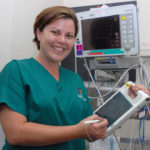
Link between clinical errors and emergency shift patterns
There is a well-established link between shift work, nurse exhaustion and clinical errors. However there is a lack of research focusing specifically on emergency departments (ED) and nurse rostering patterns. ED nurses are at particular risk of fatigue due to the fast-paced and demanding nature of the work environment caring for high acuity patients, increasing the risk of clinical errors and threatening patient safety. Shift work in the ED is an around-the-clock occupation, frequently nurses are required to commence work at 07:00 on the morning following a 21:30 finish, a shift pattern termed a “late/early”. Understanding the impact that this…
Principal Investigator:
Dr Ogilvie Thom
Amount Awarded: $19,796
Institution: Nambour General Hospital

The Value of Avoiding the Pain of IV Catheter Failure.
Peripheral intravenous catheters (PIVC) are the most common invasive device utilised in health care, yet have very high failure rates because of infection, phlebitis, occlusion or dislodgement. Previous EMF-funded research (IVL-GONE: Intravenous Lines – Glue or Not Experiment, Bugden et al., 2015) has shown that the addition of two drops of medical grade superglue in addition to standard dressings at the insertion site of PIVCs can reduce the failure rate from 27% to 17% over 48 hours. Reduction in failure rates is expected to have beneficial effects on patient comfort and outcomes, along with hospital flow and costs. Uptake of…
Principal Investigator:
Dr Mark Scott
Amount Awarded: $30,550
Institution: Caboolture Hospital
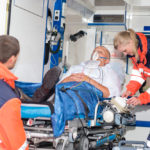
Patients transfers from rural hospitals – are we getting it right?
The aim of this research was to provide preliminary data on patients transferred to Toowoomba Hospital from 18 rural hospitals within the Darling Downs Hospital and Health Service. The data was collected via a retrospective audit in order to identify transfers where quality and safety may not have been optimal. There has been no clear indication of the magnitude of the potential problems with patient transfers and no validated method for obtaining this information.
Principal Investigator:
Dr Sheree Conroy
Amount Awarded: $5,940
Institution: Toowoomba Hospital

Patients from Dalby and Kingaroy Hospitals are transferred to Toowoomba Hospital, for CT Scanning and advanced Radiology, when CT and Advanced Radiology services are not available locally. Dalby and Kingaroy Hospitals only have these services during business hours, Monday to Friday, and advanced Radiology when the trained Radiologist is working. This means on weekends and after-hours, patients need to be transferred to Toowoomba for these services. It is hypothesised that a percentage of transfers from rural hospitals for head and neck imaging following minor trauma do not meet ACEM guidelines. Our aim is to investigate the reasons for transfer for…
Principal Investigator:
Dr Jacob Crosdale
Amount Awarded: $8,620
Institution: Toowoomba Hospital
> Special Funding Round COVID-19
> Rural and Remote Research Program
> Research Scholarship
Research Scholarship Grant Dr Jeremy Furyk
Status epilepticus (SE) occurs when seizures do not stop spontaneously and can result in long-term disabilities and occasionally death. There is a paucity of high quality evidence on SE, particularly in children and causes and outcomes are different from adults. This program of research on SE uses mixed methods to address this gap in knowledge. The research includes identifying consensus research priorities among experts and a qualitative evaluation of alternatives to informed consent (which is a potential barrier to prospective emergency research).
Principal Investigator:
Dr Jeremy Furyk
Amount Awarded: $150,000
Institution: The Townsville Hospital
> Research Capacity Building
> Project

A data linkage and patient outcome study of Aeromedical Retrieval Services in Central Queensland.
Aeromedical services link patients to vital health care. Currently, there is limited understanding of the aeromedical patient journey and outcomes in Queensland. This first-of-its-kind study seeks to take the next step in patient-centered outcomes research and resource allocation planning by linking together existing, but independent emergency department, aeromedical, hospital and deaths databases. A review of the Queensland aeromedical system, (2010-2014) found there is increasing aeromedical use, with an average of 51 flights/ day (102,892 flights) tasked throughout Queensland; with cardiology cases (20%) most common. Yet, there were limitations. First, aggregated data did not clearly differentiate between inter-hospital transfer, back-transfer, multiple-step…
Principal Investigator:
Dr Mark Edwards
Amount Awarded: $50,000
Institution: Rockhampton Base Hospital

When a child presents to an emergency department, or is admitted to the intensive care unit because of a life-threatening condition, they may need immediate treatment to support their breathing. In these circumstances a child is given medication to put them to sleep and the airway is secured with the insertion of a tube into the windpipe. This transition from spontaneous breathing when a child is awake to controlled respiration under anaesthetic via a breathing tube is called intubation. This procedure is technically challenging and is often associated with low oxygen levels in children. New methods of intubation which reduce…
Principal Investigator:
Dr Shane George
Amount Awarded: $282,290
Institution: Gold Coast University Hospital

Too much of a good thing: does fluid resuscitation worsen septic shock?
Patients with infections are a leading cause of presentations to the Emergency Department (ED), with severe sepsis and infection causing an estimated 20,000 deaths each day across the world. Treatment is aimed at eradicating the infection and supporting the patient while recovery can take place. Frequently patients develop low blood pressure as a result of immune response that can ultimately result in further organ injury (termed septic shock). Intravenous fluids are recommended by international guidelines as the first line therapy in the ED to treat low blood pressure of sepsis with the hope of preventing organ injury and death. Despite…
Principal Investigator:
Prof Louise Cullen
Amount Awarded: $77,233
Institution: Royal Brisbane & Women's Hospital

FEISTY – Fibrinogen Early In Severe Trauma study
This clinical trial aims to improve the quality of the resuscitation of patients with traumatic haemorrhage. We are enrolling 100 patients from four major trauma centres in Queensland. Patients admitted with severe traumatic bleeding will be given either Fibrinogen concentrate or cryoprecipitate. Time to administration of these products and effects on blood fibrinogen levels will be measured. We are using innovative technology to identify hypofibrinogenaemia; we will provide data to define the optimal method of replacement and monitoring of the end points of resuscitation; and provide data on the role of fibrinogen concentrate and its use in traumatic haemorrhage. We…
Principal Investigator:
Dr Don Campbell
Amount Awarded: $292,937
Institution: Gold Coast University Hospital
> Program
> Patient Flow
> Leading Edge
> JumpStart
> Emerge
> Capacity Building
Rural and remote
> Trauma Care in Regional Rural and Remote Qld
> Trainee
> Staff Specialist
> Special Funding Round COVID-19
> Rural and Remote Research Program

Point-of-care testing for better management of acutely ill remote patients.
Australians living in rural and remote areas experience a significantly higher burden of acute care episodes compared to those living in metropolitan and urban areas. A contributing factor is the effect of geographical isolation and its impact on access to health services including pathology testing. We aim to assess the benefits of using point-of-care testing at remotely located health centres of the Northern Territory. Point-of-care testing enables pathology testing to be performed on-site, with results available during the patient consultation. We will investigate the clinical benefits of using point-of-care testing to either rule-out a potential acute medical problem, stabilise an…
Principal Investigator:
Prof Mark Shephard
Amount Awarded: $95,730
Institution: The Flinders University Of South Australia

Ketamine vs Propofol in Sedation of Psychiatric/Psychotic Patients requiring Retrieval.
The research aim is to conduct as a randomised clinical trial comparing the use of Ketamine and Propofol in sedating acute psychiatric patients for safe aeromedical retrieval. The inherent dangers of the aviation environment combined with the potential and unpredictable behaviour of acute psychiatric patients presents a challenge to even the most experienced aeromedical retrieval clinician. An efficacious sedation drug is vital in this environment to ensure patient and crew safety and to minimise patient distress. The outcomes of this research will highlight the potential complications, the safety profile and efficacy of different sedation agent utilised in the sedation of…
Principal Investigator:
Ms Jodie Mills
Amount Awarded: $50,000
Institution: CareFlight

Stroke and heart attacks (HA) are caused by blocked brain or heart blood vessels. The impact of stroke or HA depends in part on time taken to unblock occluded blood vessels. Rural people with stroke or HA receive treatment to unblock vessels later than city folk. The delay to re-perfusion causes damage and worse outcomes for country people experiencing stroke or HA. Late re-perfusion is associated with increased brain or heart injury. A treatment called "remote-ischaemic-conditioning" (RIC) involves a modified blood-pressure cuff that occludes limb blood flow for short periods, is known to protect against re-perfusion injury. The aims of…
Principal Investigator:
Dr Simon Black
Amount Awarded: $49,978.00
Institution: The Northern Hospital
> Research Scholarship
> Research Capacity Building
> Project
> Program
> Patient Flow
> Leading Edge
> JumpStart
> Emerge
> Capacity Building
Queensland
> Trauma Care in Regional Rural and Remote Qld
> Trainee

Sedation for Acute Agitation in Emergency Department Patients: Targeting Adverse Events (SIESTA)
Acutely agitated patients are commonly seen in the emergency department (ED). As these patients may cause harm to themselves or others, a large proportion need to be managed with injectable sedative medications such as benzodiazepines (eg midazlolam) and/ or antipsychotics (e.g droperidol). Unfortunately, these medications may precipitate life threatening events (e.g hypoventilation). Safety data related to the use of these medications for the management of acute agitation in the ED setting are scant. Acute agitation in the ED setting is usually caused by mental health issues or substance abuse, again little is known about which sedative medications are best suited…
Principal Investigator:
Dr Barrie Field
Amount Awarded: $17,639
Institution: Nambour General Hospital

Injuries and even death as a consequence of falls from ladders are increasing, especially in the home environment where elderly men are the most frequently presenting age group. There is considerable interest among health and safety professionals to develop injury prevention campaigns focusing on both ladders and their correct use. However there are large gaps in our knowledge, particularly in relation to the product choice, contribution of alcohol or medications, and compliance of safety practices at the time of the accident. This study is a collaboration bringing together expertise in emergency medicine, health economics, accident prevention and product safety. It…
Principal Investigator:
Dr Gabriella Wood (nee Butler)
Amount Awarded: $18,633
Institution: Nambour Hospital
> Staff Specialist

Ketamine IntraNasally Delivered in the Emergency Room: KINDER
Sick and injured children in the Emergency Department (ED) often require procedures which can cause severe pain (like fracture reduction, stitching wounds, abscess drainage) or otherwise require the child to be still and cooperative (CT scans, lumbar punctures, removal of foreign bodies). Sedative drugs are given to these patients both to relieve pain/distress and to keep them still for the procedure. ED sedation of children now has a well established body of evidence. Most of the literature relates to when the drug is given intravenously or intramuscularly. Drug delivery by these routes leads to reliable effects as the drug bypasses…
Principal Investigator:
Dr Luke Burman
Amount Awarded: $63,015
Institution: The Townsville Hospital

Worldwide, the respiratory distress associated with pneumonia and other causes remains the leading cause of death in children. In Australia 39% of intensive care admissions for children are due to respiratory disease, with bronchiolitis/viral infection representing 17%, asthma 7% and pneumonia 7%. There is an emerging trend to support respiration with methods other than oxygen, particularly in the early stage of disease process aiming to prevent the progression of disease. In under resourced countries children presenting to hospitals with severe pneumonia have a mortality rate between 13-20% and most deaths occur with hypoxemia before therapeutic benefit of antimicrobials. High flow…
Principal Investigator:
Dr Fiona Thomson
Amount Awarded: $70,000
Institution: Queensland Children's Hospital

REstricted Fluid REsuscitation in Sepsis-related Hypotension (REFRESH)
The REFRESH study is a multicentre, open-label, randomised, phase II clinical feasibility trial. This is the first randomised trial examining fluid volume for initial resuscitation in septic shock in an industrialised country. A pragmatic, open-label design will establish the feasibility of undertaking a large, international, multicentre trial with sufficient power to assess clinical outcomes. The embedded biomarker study aims to provide mechanistic plausibility for a larger trial by defining the effects of fluid volume on markers of systemic inflammation and the vascular endothelium. Participants will be patients presenting to the emergency departments of Australian metropolitan hospitals with suspected sepsis and…
Principal Investigator:
Prof Gerben Keijzers
Amount Awarded: $54,125
Institution: Gold Coast Hospital and Health Service

Convulsive status epilepticus (CSE) occurs when seizures do not stop spontaneously. It is the most severe form of epilepsy, and can result in long-term disabilities and rarely death. It can affect both adults and children, although the causes and outcomes are different in these groups of patients. Treatments of patients with CSE are largely based on expert opinion rather than strong evidence, due to the difficult nature of conducting quality trials in patients with this relatively infrequent condition in the emergency setting. We will determine the incidence and causes of CSE in children in Australia and New Zealand and collect…
Principal Investigator:
Dr Jeremy Furyk
Amount Awarded: $69,992
Institution: The Townsville Hospital

Describing the experiences of social workers in a tertiary emergency department
The Royal Brisbane and Women’s Hospital Emergency and Trauma Centre is one of the largest emergency departments in Australia. It is the only one that includes an on-site team of social worker 24/7. This research project is the first conducted to explain the evolution of this service, its implications for the social work team, and for the department more broadly. This study involves a qualitative analysis of the experiences of this social work team, based on information provided during interviews. This is the proposed first phase of research, which will inform future research including measures such as compassion fatigue and…
Principal Investigator:
Dr Alexandra Markwell
Amount Awarded: $14,735.00
Institution: Royal Brisbane & Women's Hospital

This pilot project brings together experts from the fields of emergency medicine, medical education and organisational psychology. Its aim is to develop a tool which may be used to evaluate risk propensity in emergency doctors. An individual’s propensity for risk and their decision making involving risk have both positive and negative consequences. It is most often revealed when faced with scenarios that involve a trade-off amongst competing demands. Risk-related behaviour may cause harm to self, staff and patients; however it can also be used positively when the potential benefit is high, e.g. when the risk associated with a procedure is…
Principal Investigator:
Dr Charley McNabb
Amount Awarded: $36,808
Institution: Princess Alexandra Hospital

Professor Cullen and her research team developed the IMPACT protocol with EMF funding. This protocol enables the rapid diagnosis of low and medium risk patients presenting to the emergency department with chest pain. The protocol has been put into practice across Queensland Health. This body of research aimed to identify whether the translation had been successful at the Royal Brisbane and Women's Hospital.
Principal Investigator:
Prof Louise Cullen
Amount Awarded: $69,395
Institution: Royal Brisbane & Women's Hospital
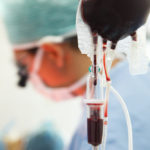
Qld pre-hospital study identifies trauma patients at risk of bleeding to death
Traumatic injury is the leading cause of death and the second highest contributor to the burden of disease of Australians aged between 12 and 24 years. In approximately 10-50% of trauma, blood does not clot properly, with these patients up to 4 times more likely to die from their injuries. Researchers aim to determine the proportion of injured patients with clotting problems. Identifying these patients may enable life-saving treatment to commence enroute, and rapid intervention on arrival at hospital. Servicing the greater Brisbane and Gold Coast areas, the Queensland Ambulance Service (QAS) High Acuity Response Unit (HARU) provides advanced trauma…
Principal Investigator:
Dr Daniel Bodnar
Amount Awarded: $64,000
Institution: Royal Brisbane & Women's Hospital

Exploring the practice of nurse-initiated medications in the emergency department
The autonomy to nurse-initiate analgesia and selected medications enhances processes in the emergency department (ED). Nurse-initiating practice enhances patient care and clinical outcomes by improving pain assessment, it provides safe pain management, and reduces time to analgesia ED. However, the practice might be underutilised due to feelings of reluctance or apparent medication knowledge deficit. The factors that may contribute to reluctance or hinder medication knowledge are unknown. A qualitative methodology is proposed to determine these factors, because it can potentially identify practice gaps, isolate flaws in the current education method utilised in the ED, and establish strategies that maintain medication…
Principal Investigator:
Dr Michael Sinnott
Amount Awarded: $7,478.84
Institution: Princess Alexandra Hospital
> Special Funding Round COVID-19
> Rural and Remote Research Program
> Research Scholarship
> Research Capacity Building
> Project

The Cannulation Rates in ED Intervention Trial (CREDIT)
A peripherally inserted intravenous catheter (PIVC) is a small tube placed into a vein to administer medication or fluids. PIVCs are commonly used in Emergency Departments but recent literature suggests that emergency care providers may place PIVCs more often than required; up to 50% remain unused. This places the patient at unnecessary risk of catheter-related infections and is associated with a high financial cost to the healthcare system. We will conduct a historically controlled trial where observational data will be collected before and after an intervention aimed to reduce PIVC use. Data collected before the intervention will identify 1) how…
Principal Investigator:
Prof Louise Cullen
Amount Awarded: $80,000
Institution: Royal Brisbane & Women's Hospital

The Breathe Easy Early Study: BEES
Shortness of breath is one of the most common reasons for presentation to Australian Emergency Departments, with millions of presentations each year. A new patient, unable to speak properly because they cannot breathe present difficulties in immediate diagnosis and therefore treatment, to emergency doctors and nurses. Immediate management involves the application of oxygen via a face-mask in addition to drug therapy and investigations including x-rays and blood tests. If breathlessness gets worse, the patient may need invasive support for breathing; a process that involves more staff, expensive machines, and resultant considerable cost to the health care system. A simpler support…
Principal Investigator:
Dr Kylie Baker
Amount Awarded: $159,173.44
Institution: Ipswich Hospital

Delivering emergency care in the watch house: an outcomes analysis.
Increasingly, prisoners are requiring transfer to and assessment in the ED; some for illnesses that may be treated in the custodial environment with an appropriately trained health care professional. Optimising how health care is delivered in the watch house environment was the focus of this study, following recommendations in a recent (2012) Inquiry following the death of Herbert John Mitchell. This study is underpinned by recommendations from deaths in custody, the literature and anecdotal experience. The study will provide a comprehensive outcomes evaluation of a 66 day trial of a model where emergency nurses were posted to the local watch…
Principal Investigator:
A/Prof David Green
Amount Awarded: $116,772
Institution: Gold Coast Hospital and Health Service

Reducing Emergency Department demand through expanded primary healthcare practice.
Patient demand on Emergency Departments (EDs) is rising by over 3% per annum contributing to congestion. ED congestion is known to be associated with poor health outcomes and reduced efficiency; the latter is characterised by increased waiting time, length of stay and ambulance diversion. Even though the National Emergency Access Target (the four-hour rule) has reduced the level of access block, initiatives to reduce ED demands have not had significant effect to date. Previous research undertaken by the emergency health research group at QUT has described in detail the increases in demand and has identified some contributing factors. Our research…
Principal Investigator:
Dr Douglas Morel
Amount Awarded: $227,682
Institution: Redcliffe Hospital
> Program
> Patient Flow
> Leading Edge
> JumpStart
> Emerge
> Capacity Building
Capacity Building Grant: Royal Brisbane and Women’s Hospital
The Royal Brisbane and Women’s Hospital (RBWH) Department of Emergency Medicine (DEM) is constantly looking for better ways to improve the care of the sick and injured. Patients are cared for by a team of professionals including doctors, nurses and other allied health professionals. Improvements in care come largely from high quality research. Our medical specialists in Emergency work on a wide range of challenging, innovative emergency medicine research topics. Their results are reported in some of the top professional journals, including the Lancet. Research led by other team members including nurses, however, is scarce despite the fact that these…
Principal Investigator:
Prof Louise Cullen
Amount Awarded: $140,000
Institution: Royal Brisbane & Women's Hospital
Rural and remote
> Trauma Care in Regional Rural and Remote Qld
> Trainee
> Staff Specialist
> Special Funding Round COVID-19
> Rural and Remote Research Program
> Research Scholarship
> Research Capacity Building
> Project
> Program
> Patient Flow
> Leading Edge
> JumpStart
> Emerge
> Capacity Building
Queensland
> Trauma Care in Regional Rural and Remote Qld
> Trainee
> Staff Specialist

Drugs for the treatment of nausea and vomiting in adult patients in the emergency department setting
Nausea and vomiting is a common and distressing presenting complaint in emergency departments. Nausea describes the unpleasant sensation of the imminent need to vomit, whereas vomiting refers to the forceful oral expulsion of gastric contents associated with contraction of the abdominal and chest wall musculature. The complications from nausea and vomiting can range from trivial to serious, such as dehydration and oesophageal rupture. High level evidence supports the use of antiemetics in the management of nausea and vomiting in many settings and populations, however there is little guidance or consensus in recommendations for the management of nausea and vomiting in…
Principal Investigator:
Dr Jeremy Furyk
Amount Awarded: $24,959.00
Institution: The Townsville Hospital

Workplace stress in the emergency department (ED) is an internationally recognised issue. It is important to understand how ED staff cope with the stressors within their working environment. The overall aim of this study was to describe and compare the impact of the working environment and varied coping strategies amongst medical and nursing staff working in Emergency Departments (ED) in Australia and Sweden.
Principal Investigator:
Dr Ogilvie Thom
Amount Awarded: $29,141
Institution: Nambour General Hospital

Serum catecholamine levels in Irukandji Syndrome (IS)
Irukandji Syndrome (IS) is a condition caused by the venom of jellyfish found in the tropical waters of Australia and has received significant media attention over the past decade. The syndrome most commonly presents with a variable combination of severe generalised pain, involving the torso and limbs, nausea and vomiting, sweating, headache and severely elevated blood pressure and pulse. Documented complications of IS include myocardial (heart) damage and failure, intracerebral haemorrhage (bleeding on the brain) and death. The signs and symptoms of IS are believed to be due to excessive release of endogenous catecholamines (stress hormones). A number of in-vitro…
Principal Investigator:
Dr Clinton Gibbs
Amount Awarded: $9,340
Institution: The Townsville Hospital

Validating the Manchester Acute Coronary Syndromes (MACS) Clinical Decision Rule
Diagnosis of heart attack (acute myocardial infarction) relies on troponin testing along with additional inpatient investigations. Researchers in the United Kingdom have developed a clinical decision rule (the MACS rule) for avoiding unnecessary hospitalisation for patients with chest pain. The MACS rule places individuals into four risk groups with suggested dispositions for each group, with the very low risk eligible for immediate discharge. Initial validation of the rule revealed that 31.5% of patients met the low risk criteria and so could be discharged from hospital with no further investigation. Of these patients, none had a heart attack within 30 days.…
Principal Investigator:
Prof Louise Cullen
Amount Awarded: $27,806
Institution: Royal Brisbane & Women's Hospital

In this project, the team investigated how to assess and treat patients with clotting disorders as a result of trauma and severe bleeding. Patients with severe trauma and critical bleeding have a high risk of death from haemorrhage and the complications associated with large volume blood transfusion. The ability of the patient to form a blood clot will be assessed using a ROTEM/multiplate device. This device gives an in-depth assessment of the patient’s clotting and allows specific treatment to be targeted at specific clotting defects. Using this technology, the investigators hope to reduce the amount of bleeding in these cases…
Principal Investigator:
Dr Donald Campbell
Amount Awarded: $69,263
Institution: Gold Coast University Hospital

Children’s Rules for Imaging the Cervical Spine Evaluation Study
In this study, clinicians looked at all children presenting to the ED over a 12 month period for the assessment of possible cervical spine injury to better understand how children are treated in hospital and how further investigation into the use of these rules can be undertaken. Children rarely break their necks but if they do, they can risk spinal injury or death. Many more children present for assessment of possible cervical spine (neck) injuries than are subsequently diagnosed with cervical spine injury. The challenge for the emergency doctor is to identify the rare cases without subjecting too many children…
Principal Investigator:
Dr Natalie Phillips
Amount Awarded: $69,930
Institution: Queensland Children's Hospital

Basel Syncope Evaluation Study: BASEL IX Study
Management of patients with syncope (loss of consciousness) is a serious problem concerning 1 - 2 per cent of Emergency Department presentations. Of these, it is known that between six and 20 per cent of patients will have a problem with their heart. The rapid and accurate identification of patients with cardiac related syncope is an important clinical need which until this time has not been met. This observational study will evaluate the diagnostic value of patients’ history, clinical judgement and new blood tests (biomarkers) for cardiac syncope. The study will recruit 720 adult patients across multiple sites internationally. Eligibility…
Principal Investigator:
Prof Louise Cullen
Amount Awarded: $32,100
Institution: Royal Brisbane & Women's Hospital
> Special Funding Round COVID-19
> Rural and Remote Research Program
> Research Scholarship
Noel Stevenson Research Scholarship: Dr Colin Page
Dr Colin Page was awarded the Noel Stevenson Fellowship (in honour of eminent Queensland emergency medicine physician, Dr Noel Stevenson) to undertake a Doctorate of Philosophy (PHD). Dr Page is studying the antidotes and treatments that are commonly used by medical staff when looking after patients who are affected by drug toxicity. The PhD will be based at Princess Alexandra Hospital within the clinical toxicology unit with extension to other toxicology units/hospitals within Australia. It will be undertaken through the University of Newcastle (NSW) under the supervision of A/Prof Geoff Isbister and Prof Nicholas Buckley, who are both leaders in…
Principal Investigator:
Dr Colin Page
Amount Awarded: $450,000
Institution: Princess Alexandra Hospital
> Research Capacity Building
> Project

Australia, Asia and New Zealand Dyspnoea in Emergency Departments Study
Shortness of breath (dyspnoea) is a terrifying symptom experienced by patients and is a common reason for presentation to Emergency Departments. There are a wide range of causes including flair up due to chronic conditions such as asthma, heart failure, chronic lung disease or liver or kidney failure. Acute conditions such as a collapsed lung, chest infection (including pneumonia), trauma (including fractured ribs), airway blockage or an allergic reaction can also be the cause. There is significant knowledge about patients who are admitted to hospital with common causes, however there is little conclusive information about Dyspnoea as a symptom, the…
Principal Investigator:
Prof Gerben Keijzers
Amount Awarded: $96,000.00
Institution: Gold Coast University Hospital

Gastrointestinal (GI) bleeding is a common emergency with a substantial mortality rate. Bleeding from the upper gastrointestinal system is caused by ulcers, stomach inflammation and oesophageal varices and carries a fatality rate of up to 10%. Lower GI bleeding has a variety of causes and a case fatality of about 15%. Between 10% and 25% of patients will have a repeat bleed after their first episode, and these people are four times more likely to die than people without repeated bleeding. The clotting of blood helps to stem bleeding and blood clot break down may play an important role in…
Principal Investigator:
Dr Luke Lawton
Amount Awarded: $185,788
Institution: The Townsville Hospital

Pain is a common feature of major traumatic injuries. Little research has been done into the utilisation of low dose Ketamine for analgesia in the ED. Ketamine has the potential to be a highly effective method of analgesic management in haemodynamically unstable trauma patients who are unsuitable for large doses of opioid drugs but it is not utilised for this purpose due to a lack of supporting evidence and clinical concern about potential side effects. The clinical impact of this trial is in the development of an evidence base to support the use of Ketamine for analgesic purposes in the…
Principal Investigator:
Dr Luke Burman
Amount Awarded: $25,170
Institution: The Townsville Hospital

Magnesium in Irukandji Syndrome Trial (MIST).
This research project did not commence.
Principal Investigator:
Dr Jeremy Furyk
Amount Awarded: $105,282
Institution: The Townsville Hospital

A randomised controlled trial of intravenous paracetamol and oral paracetamol to control acute pain
Pain is a common reason for presentation to the emergency department. In 78–86% of Australian emergency department presentations pain is a primary component and therefore represents a major clinical care issue. However, numerous studies have shown that pain is poorly managed in the emergency department. This project aims to provide evidence that intravenous (IV) paracetamol produces superior analgesia than oral paracetamol in the emergency department setting and that IV paracetamol produces good patient satisfaction, few side-effects and reduced length of hospital stay. To date the majority of trials into the effectiveness of IV paracetamol have focused on specific disease states…
Principal Investigator:
Dr Benjamin Close
Amount Awarded: $40,870.00
Institution: The Townsville Hospital

Measuring quality of care for musculoskeletal injuries in the Emergency Department.
The increasing demand on emergency health care in Australia has seen recent emphasis on clinical redesign initiatives that are focused on time-based performance measures and activity-based funding. While congestion in emergency departments continues, and emphasis is placed on reaching these time targets, the quality of care that patients receive when presenting with non-life threatening injuries is potentially compromised. To date, there is a lack of high-level evidence surrounding the type of quality indicators (QIs) that should be used in EDs to measure quality of care. This project will develop QIs for care of patients who present to EDs with musculoskeletal…
Principal Investigator:
Dr Anthony Bell
Amount Awarded: $274,969
Institution: Queensland Elizabeth II Jubilee Hopsital

High Flow Nasal Cannula treatment for viral Bronchiolitis, a randomised controlled trial
Acute respiratory disease is the leading cause for infants and children needing hospital admission. The main focus of hospital treatment is oxygen therapy beside disease specific treatment like inhalers for asthma or antibiotics for pneumonia. 10 to 20% of these infants or children need higher level of care at some point of their illness and will be transferred to a children’s hospital intensive care unit. This is not only expensive and imposes a huge burden on health care costs but more importantly is very stressful for these children and families because they are taken out of their familiar environment. Recent…
Principal Investigator:
Dr Christa Bell
Amount Awarded: $50,800
Institution: Gold Coast University Hospital

ConSEPT: Convulsive Status Epilepticus Paediatric Trial
Convulsive Status Epilepticus (CSE) is the most common childhood neurological emergency, sometimes resulting in death or serious disability. CSE is managed with anticonvulsant medications in a step-wise approach until seizures stop. While some management strategies for CSE are well supported by evidence (e.g. initial administration of benzodiazepines), subsequent strategies are based on expert consensus and not evidence. Phenytoin, the traditional second line agent for CSE has a high failure rate, causes adverse events and must be administered slowly. Levetiracetam, a newer anticonvulsant, has a favourable adverse events profile, can be administered quickly and has good efficacy for various seizure types.…
Principal Investigator:
Dr Jeremy Furyk
Amount Awarded: $147,820
Institution: The Townsville Hospital
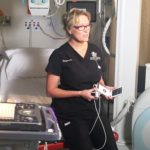
Many older persons present to the Emergency Department complaining of shortness of breath (Dyspnoea). This can be an important forewarning of heart failure, but is also present in many other conditions. In most cases, several bedside tests are carried out to identify those patients with heart failure. Despite these investigations, which include blood tests, electrocardiograph and chest x-ray, heart failure is initially misdiagnosed in up to one quarter of patients in the emergency department. This project focuses on secondary prevention of the complications of the disease caused by missed diagnosis. Some European hospitals use bedside lung ultrasound as an adjunct…
Principal Investigator:
Dr Kylie Baker
Amount Awarded: $195,542.00
Institution: Ipswich Hospital
> Program

Envenomation, first aid and critical care of tropical jellyfish stings
Queensland is currently recognised as the leader in the field of jellyfish envenoming treatment. Many of the treatments for jellyfish stings are not evidence based and data is emerging that suggests that some of the treatments may do more harm to jellyfish sting victims than good. This project will investigate three major areas of present contention: • Is vinegar a suitable first aid for jellyfish stings? • Can the survival rate of victims stung by big box jellyfish be increased by simply continuing CPR for extended periods? • Can readily available and used drugs be the answer to the ever-increasing…
Principal Investigator:
A/Prof Mark Little
Amount Awarded: $344,340.00
Institution: Cairns Hospital

Every second counts when a patient’s heart stops and critical to this is restarting the heart and maximising blood flow to the brain. Without adequate blood flow to the brain, eventual survivors can be left with a devastating brain injury and be forced to live for their remaining years with severely reduced quality of life. The rapid delivery of adrenaline to restore cardiac function and deliver blood to the brain is critical to improving survival. Current techniques for delivering adrenaline focus on cannulating a vein. This can take many of those crucial seconds and more frequently several minutes, as the…
Principal Investigator:
Dr Andrew Staib
Amount Awarded: $250,000
Institution: The Prince Charles Hospital
> Patient Flow
> Leading Edge
> JumpStart
> Emerge
> Capacity Building
Rural and remote
> Trauma Care in Regional Rural and Remote Qld
> Trainee
> Staff Specialist
> Special Funding Round COVID-19
> Rural and Remote Research Program
> Research Scholarship
> Research Capacity Building
> Project
> Program
> Patient Flow
> Leading Edge
> JumpStart
> Emerge
> Capacity Building
Queensland
> Trauma Care in Regional Rural and Remote Qld
> Trainee
> Staff Specialist

Urinalysis is commonly performed with samples examined for various chemicals, bacteria, viruses, parasites, fungi, proteins, blood and cells. A well collected mid-stream urine sample obtained to confirm or exclude urinary tract infection before the commencement of antibiotic therapy enables rapid, correct and reliable identification and antibiotic sensitivities of any infecting bacteria. For ambulant patients the urine usually is provided through collection of a clean-catch mid-stream urine sample (MSU). Collection may be undertaken by the patient themselves or with the assistance of family, friend or health professional. To avoid contamination by cells and bacteria, samples should be collected after discarding the…
Principal Investigator:
Dr Michael Sinnott
Amount Awarded: $26,701
Institution: Princess Alexandra Hospital
Chest pain is a common reason for presentation to the emergency department and admission to hospital. Even when this chest pain is due to acute coronary syndrome (heart attack), it is not always clear how dangerous this might be. Australian guidelines propose a number of features that help judge severity and guide treatment. However, there is increasing evidence that impaired heart relaxation is an early sign of heart attack. This can be diagnosed using ultrasound and might be a very sensitive test to identify patients in danger. This project aims to perform detailed ultrasound assessment of heart relaxation and filling,…
Principal Investigator:
Dr Joseph Ting
Amount Awarded: $68,058
Institution: The Mater Hospital
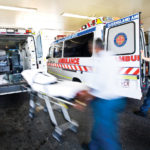
Evaluation of the Emergency Department Ambulance Offload Nurse (EDAOLN) in Queensland
Queensland Health have recognised that patient flow strategies are required for emergency departments in order to i) improve the patient journey and experience; ii) reduce delays and increase access to health care services; and iii) provide best clinical practice across the state. An Emergency Department Ambulance Off-Load Nurse (EDAOLN) role was commenced on Friday 17 August 2012 at the Gold Coast Hospital. The aim of this advanced nursing role was to provide rapid triage and assessment for patients arriving to the ED by ambulance and to commence initial meaningful treatment as required (such as X-rays, pathology, analgesia) on a 24/7…
Principal Investigator:
A/Prof David Green
Amount Awarded: $40,553
Institution: Gold Coast University Hospital

Bronchiolitis in infants is the leading cause of paediatric hospitalisation in Australia accounting for approximately 8000 admissions annually, of which approximately 500-600 are admitted to a paediatric intensive care unit (PICU) requiring respiratory support. None of the current treatments have successfully changed the outcome of the disease or the burden on health care systems. High flow nasal cannula (HFNC) therapy has been used over the last few years in paediatrics with reports showing a reduction in the need for non-invasive and invasive respiratory support. HFNC reduces the work of breathing, improves the gas exchange and can be applied very early…
Principal Investigator:
Dr Christa Bell
Amount Awarded: $69,924
Institution: Gold Coast Hospital and Health Service
> Special Funding Round COVID-19
> Rural and Remote Research Program
> Research Scholarship
> Research Capacity Building
> Project

Many children sustain head injuries and present to emergency departments for evaluation. Even a seemingly minor incident may lead to serious injury requiring neurosurgery. While head computer tomography (CT) identifies all important injuries, there is an increasing recognition that radiation from CTs can increase the risk of fatal brain cancers, especially in younger children. Failure to identify a significant intracranial injury quickly may result in catastrophic consequences including long-term neurological disability and or death. A number of evidence-based head injury (HI) clinical decision rules (CDRs) have been developed to help physicians identify patients at risk of having a significant head…
Principal Investigator:
A/Prof Jason Acworth
Amount Awarded: $298,028
Institution: Queensland Children's Hospital
> Program

Diagnostic Workup for Suspected Subarachnoid Haemorrhage.
Subarachnoid haemorrhage (SAH) is a type of stroke, which affects about 10 in 100,000 Queenslanders. A patient with SAH usually complains of a sudden onset severe headache. About one in three of these patients die and another one in three survive with a disability. Early diagnosis and treatment is essential. Diagnosis involves a Computed Tomography (CT) scan and a spinal puncture to look for blood in the spinal fluid surrounding the brain. However, these tests are not 100 per cent accurate. However, doctors and patients are concerned about complications from these tests. These include radiation from CT scans and discomfort…
Principal Investigator:
A/Prof Kevin Chu
Amount Awarded: $268,600.00
Institution: Royal Brisbane & Women's Hospital
> Patient Flow
> Leading Edge
> JumpStart
> Emerge
> Capacity Building
Rural and remote
> Trauma Care in Regional Rural and Remote Qld
> Trainee
> Staff Specialist
> Special Funding Round COVID-19
> Rural and Remote Research Program
> Research Scholarship
> Research Capacity Building
> Project
> Program
> Patient Flow
> Leading Edge
> JumpStart
> Emerge
> Capacity Building
Queensland
> Trauma Care in Regional Rural and Remote Qld
> Trainee

Patients with finger injuries often require their finger to be numb to allow their injury to be assessed properly and treated. There are several methods available to numb the finger. Our study aims to compare two methods for numbing the patient’s finger to see which one of these methods is least painful for the patient. The first method is a single injection in the palm of the hand and the second method is two injections in the back of the hand or finger. The second method is the most commonly used method in our emergency department. Our hypothesis is that…
Principal Investigator:
Dr Shane Martin
Amount Awarded: $8,712.00
Institution: Royal Brisbane & Women's Hospital
> Staff Specialist
The aim of this study was to determine whether 4% albumin solution is superior to saline for fluid resuscitation of patients presenting to the emergency department with septic shock.
Principal Investigator:
Dr Julian Williams
Amount Awarded: $41,270
Institution: Royal Brisbane & Women's Hospital

Describing health care use in a cohort of children 0-5 years in South East Queensland
Emergency Department (ED) presentations are disproportionately greater in young children than all other age-groups. Young children are a vulnerable population and are at risk for injury and serious medical illness. In Australia, 13 per cent of all ED presentations were from children less than 5 years of age. Factors that lead to greater ED presentation rates in young children are incompletely understood and need further investigation. This project has access to unique data from another existing study, the Environments for Healthy Living study (EFHL), run by the School of Medicine, Griffith University. EFHL recruited pregnant mothers in the Logan, Tweed…
Principal Investigator:
A/Prof Gerben Keijzers
Amount Awarded: $50,000.00
Institution: Gold Coast University Hospital

Recognition of the extent of medication errors resulting from misinterpretation of instructions have resulted in a multitude of recommended practices to reduce the likelihood. One area which may contribute to error, but one which has received less attention, is that of accurate interpretation of clinical chemistry results. It is well recognised that numbers containing decimal places can lead to error in medications with decimals overlooked or misplaced. Anecdotal evidence from Emergency Physicians indicates difficulty in interpreting clinical chemistry results which are presented with leading decimals (e.g. 0.0095 g/l). Misconceptions about decimals have been the subject of extensive study. Half of…
Principal Investigator:
Dr Michael Sinnott
Amount Awarded: $11,369.00
Institution: Princess Alexandra Hospital

A hand written chart or clinical record is the most widely used method of patient care documentation in emergency departments. Research demonstrates that medical note taking responsibilities are frequently fulfilled to less than optimal standards by clinicians in many care settings including EDs (Gordon et al., 2010, Stetson et al. 2008). This has major implications for patient safety because communication between colleagues at shift change and patient handover can be compromised by poor record keeping. In addition, without accurate documentation of what has occurred in the emergency department, other professionals are unable to learn what care has been delivered. Furthermore,…
Principal Investigator:
Dr Jonathon Isoardi
Amount Awarded: $48,000.00
Institution: Princess Alexandra Hospital

Intravenous lines are placed in the majority of patients admitted to hospital. Unfortunately they often fall out, become infected, cause irritation & pain or become blocked. Occasionally this can cause a life threatening illness. Blood can leak from the intravenous line onto the patient’s skin, clothing or bed linen. This causes patient distress. It can also be dangerous for hospital staff if they accidentally come into contact with the blood. The insertion of a replacement intravenous line is generally regarded as an unpleasant experience that would be nice to avoid. The IVL-GONE research team are researching the use of common…
Principal Investigator:
Dr Simon Bugden
Amount Awarded: $50,000.00
Institution: Caboolture Hospital

Primary spontaneous pneumothorax (PSP) is defined as a collapsed lung with air in the pleural cavity that occurs in the absence of clinically apparent underlying lung disease. PSP is a significant global health problem affecting adolescents and young adults. Throughout the 20th century the treatment of PSP was predominantly bed rest, with invasive treatment reserved for severely symptomatic episodes. A study in 1966 suggested that managing large and small PSP in the community was safe. Despite this, rates of intervention have steadily increased over the decades. The reasons for this are unclear and this approach has recently been questioned in…
Principal Investigator:
Dr Frances Kinnear
Amount Awarded: $50,086
Institution: The Prince Charles Hospital
> Special Funding Round COVID-19
> Rural and Remote Research Program
> Research Scholarship

Noel Stevenson Research Scholarship: Prof Louise Cullen
This study is important because it will more rapidly move patients out of acute beds. It will do this by diagnosing patients with heart attacks up to four hours earlier and allowing earlier testing of patients without a heart attack but with potential heart disease, thus preventing overnight admissions. Approximately 80 per cent of patients who present to our ED each year with chest pain do not have a heart problem. Therefore, early discharge or admission of these patients would free up significant hospital resources, improve hospital flows and reduce the economic burden on the health care system. It may…
Principal Investigator:
Prof Louise Cullen
Amount Awarded: $225,000
Institution: Royal Brisbane & Women's Hospital
> Research Capacity Building
> Project

The World Health Organization reports that trauma will be the major contributor to the 49.7 million annual deaths globally from non–communicable disease in 2020. Trauma and sepsis are the two leading causes of death worldwide. This project aims to examine the effects of trauma and severe infection on oxygen supply to various tissues and organs. We will study what infection does to metabolism and the degree of inflammation in these tissues. The effects of resuscitation on these tissue parameters while using stored and fresh blood will also be studied.
Principal Investigator:
Dr Andrew Staib
Amount Awarded: $204,402
Institution: Princess Alexandra Hospital

SWAMPED: Linking best practice workforce models to Emergency Department funding
The aims of this research are to link best practice ED workforce models to available ED funding under an activity-based funding (ABF), while contributing to the development of an improved national activity and outcome-based ED funding model. This research will identify the current status of funding of EDs, identify and critically appraise models for funding of EDs and identify the workforce implications of those funding models and propose a State-wide ED clinical workforce framework.
Principal Investigator:
Dr Anthony Bell
Amount Awarded: $190,172
Institution: Queensland Elizabeth II Jubilee Hopsital
> Program
> Patient Flow
> Leading Edge
> JumpStart
> Emerge
> Capacity Building
Rural and remote
> Trauma Care in Regional Rural and Remote Qld
> Trainee
> Staff Specialist
> Special Funding Round COVID-19
> Rural and Remote Research Program
> Research Scholarship
> Research Capacity Building
> Project
> Program
> Patient Flow
> Leading Edge
> JumpStart
> Emerge
> Capacity Building
Queensland
> Trauma Care in Regional Rural and Remote Qld
> Trainee

In the emergency department of Gold Coast Hospital, from 1 January 2008 to 31 December 2009, 0.7% of total patient population (~1512 patients) were given either a primary or secondary diagnosis of alcohol intoxication or alcohol abuse. Non admitted patients with acute alcohol intoxication or alcohol abuse had an average emergency department length of stay of 8 hours. This prolonged length of stay in the department contributes to additional resource allocation and increased morbidity through emergency department overcrowding. Current experimental evidence suggests that intravenous (IV) fluids do not increase rate of ethanol clearance from the blood of mildly intoxicated patients.…
Principal Investigator:
Dr Siegfried Perez
Amount Awarded: $40,000.00
Institution: Gold Coast Hospital and Health Service
> Staff Specialist

Elderly people often present to the emergency department short of breath. The two most common causes – heart failure and chronic lung disease- appear much the same but need very different treatments. Differentiating the two relies on taking a good history, performing an examination and doing basic investigations such as blood tests, electrocardiogram and chest x-ray (CXR). The most accurate diagnosis from the early tests is when the CXR shows a pattern called ‘alveolar interstitial syndrome’ (AIS). An experienced doctor then adds this piece of information to other parts of the history and clinical findings, to decide if the AIS…
Principal Investigator:
Dr Kylie Baker
Amount Awarded: $46,000.00
Institution: Ipswich Hospital
> Special Funding Round COVID-19
> Rural and Remote Research Program
> Research Scholarship
> Research Capacity Building
> Project

Many children sustain head injuries and present to emergency departments for evaluation. Even a seemingly minor incident may lead to serious injury requiring neurosurgery. While head computer tomography (CT) identifies all important injuries, there is an increasing recognition that radiation from CTs can increase the risk of fatal brain cancers, especially in younger children. Failure to identify a significant intracranial injury quickly may result in catastrophic consequences including long-term neurological disability and or death. A number of evidence-based head injury (HI) clinical decision rules (CDRs) have been developed to help physicians identify patients at risk of having a significant head…
Principal Investigator:
A/Prof Jason Acworth
Amount Awarded: $298,028
Institution: Queensland Children's Hospital

Patients experiencing pain and swelling in their limbs following an accident will often have X-Rays in the Emergency Department. The doctor will look at these X-rays for signs of a fracture and then treat the patient accordingly. The X-Ray specialist elsewhere in the hospital will also look at these X-Rays and write a report. However, this report may not be available until after the patient and doctor have both gone home. If the X-Ray specialist’s report identifies a fracture, other staff working in the Emergency Department will need to go back and double-check the patient’s records to make sure the…
Principal Investigator:
A/Prof Kevin Chu
Amount Awarded: $139,001
Institution: Royal Brisbane & Women's Hospital
> Program

In order to understand the effectiveness of health service delivery, and the impact of changes in processes and procedures, it is important to first be capable of analysing the data that documents patients’ journeys through the hospital. This project will bring together key data from multiple disjointed information systems so that analysis can be undertaken on the flow of patients through the Gold Coast Hospital (GCH); from the ambulance, through the Emergency Department, and admission to a ward, including the operating rooms, radiology, pathology, and pharmacy that they encounter up to their departure. With this holistic view of patients’ journey…
Principal Investigator:
Dr Gerben Keijzers
Amount Awarded: $104,833
Institution: Gold Coast University Hospital
> Patient Flow
> Leading Edge
> JumpStart
> Emerge
> Capacity Building
Capacity Building Grant: The Prince Charles Hospital
With an EMF Capacity Building grant, The Prince Charles Hospital Emergency Department has engaged in more than 20 research projects. The majority involve significant input from the Hospital's emergency clinicians, who are working in collaboration with other Queensland and interstate emergency department and/or academic institutions such as as CSIRO. Projects include: > DORM > QAS Clinical Decision Making study > ARISTOS, sepsis study > REFRESH, sepsis study > Paediatric ED evaluation > Paediatric ED discharge communication > Pneumothorax study > Lung ultrasound study > PHFEW, CO2 in paediactic nasal hi-flow > POTTY, technique for urine sample collection for pre-toilet trained…
Principal Investigator:
Dr Frances Kinnear
Amount Awarded: $190,000
Institution: The Prince Charles Hospital
Rural and remote
> Trauma Care in Regional Rural and Remote Qld
> Trainee
> Staff Specialist
> Special Funding Round COVID-19
> Rural and Remote Research Program
> Research Scholarship
> Research Capacity Building
> Project
> Program
> Patient Flow
> Leading Edge
> JumpStart
> Emerge
> Capacity Building
Queensland
> Trauma Care in Regional Rural and Remote Qld
> Trainee

Evaluation of therapeutic subclavian atrial compression
Two-thirds of people who sustain trauma to the upper limb proximal artery die from traumatic blood loss before reaching hospital. Timely stabilization of the injury, control of bleeding, and rapid transportation to an emergency department could dramatically improve the rate of survival. We know from research that these measures dramatically approval the rate of survival for traumatic injuries of other parts of the body. In this study, we will test the safety and efficacy of a particular procedure that we predict will improve the management of these injuries in the pre-hospital setting. We predict that the use of this procedure…
Principal Investigator:
Dr Darren Powrie
Amount Awarded: $15,652
Institution: Princess Alexandra Hospital

With increasing numbers of Australian medical graduates, there has been a significant increase in the intern teaching and supervision workload in emergency departments (EDs). As a result, there is the potential for dilution of supervision, making assessment of intern performance more challenging. The current process for evaluating interns has no formal requirement for direct observation of an intern’s history taking or clinical examination skills. Rather the assessment of their abilities is largely derived from the quality of presentation of their clinical findings to the senior doctors supervising them. In most EDs end of term assessments are based on facilitated discussion…
Principal Investigator:
Dr Victoria Brazil
Amount Awarded: $8,774.87
Institution: Royal Brisbane & Women's Hospital

One of the causes of patients getting sick in hospital is the transfer of bacteria from one patient to the other (nosocomial infection). This transfer of bacteria can lead to serious illness, even death. There are numerous precautions taken in hospital to prevent this, such as hand washing, wearing gloves, sterile gowns and gloves during procedures etc. There has been a tremendous growth in the use of point of care ultrasound to assist clinicians in the Emergency Department, Intensive Care Unit and Anaesthetic Department. We suspect that probes, which are in contact with patients’ skin are not cleaned as often…
Principal Investigator:
Dr Ogilvie Thom
Amount Awarded: $9,625.75
Institution: Redcliffe Hospital

A comparison between compressed air and Nitrox gas for recreational scuba divers to 18 msw
The Emergency department at The Townsville Hospital sees the largest number of emergency patients with decompression illness in Australia, due both tertiary referral and the proximity of the great barrier reef. Decompression illness is the commonest form of diving related emergency requiring emergency management. It is thought that nitrogen bubbles become trapped in the body as the gas expands upon ascent of the diver to the surface. Divers have found that in order to dive for longer periods underwater they can use Nitrox (a gas with a higher oxygen content than compressed air and therefore less nitrogen), from their scuba…
Principal Investigator:
Dr Denise Blake
Amount Awarded: $19,382
Institution: The Townsville Hospital
> Staff Specialist

Is Helicopter Transport Safe for Divers with Decompression Illness?
Diving is a common recreational activity for both Queenslanders and tourists alike. It forms the basis for whole tourism industries based on the Great Barrier Reef. Unfortunately diving does have risks which includes decompression illness (DCI). DCI involves formation of gas bubbles and can be fatal. Treatment usually involves re-pressurisation in special chambers designed to ‘squash’ the bubbles and reduce symptoms. Affected divers can only receive this treatment in certain hospitals. They may need to be transported urgently by helicopters from the reef to hospital. However, some people believe that the vibration of the helicopter may increase the number of…
Principal Investigator:
Dr Denise Blake
Amount Awarded: $46,310.62
Institution: Townsville University Hospital

The current project will involve the implementation and evaluation of a pioneering protocol for the online clinical assessment of practical skills (eCAPS) for medical residents and registrars training in Emergency Medicine. It will use a variety of web-based video technologies to facilitate the learning and innovative assessment of physical examinations of the musculoskeletal system initially targeting the knee and shoulder joints. Specifically, eCAPS includes three interdependent elements with a progressive (asynchronous to synchronous) organization of online instructor and learner-generated video resources to allow formative and summative assessments of practical competencies of Emergency Medicine residents and registrars performing selected physical examinations…
Principal Investigator:
Dr Colin Meyers
Amount Awarded: $34,582.07
Institution: The Prince Charles Hospital

Accuracy of Trauma Ultrasound in the PreHospital Environment (TUPHEn Study)
This study will evaluate the accuracy of prehospital ultrasound in patients when performed by the rapid emergency response team, consisting of paramedics and prehospital doctors in the Greater Brisbane, Logan and Ipswich areas (50km radius of the CBD), and will also compare the accuracy of paramedic performed scans to those performed by doctors. Ultrasound in Emergency Department (ED) is rapidly becoming an extension of the clinical exam. Focussed Assessment with Sonogram in Trauma (FAST) has been shown to be a rapid and non invasive means of detecting the presence of intraperitoneal and intrapericardial fluid without the need to remove the…
Principal Investigator:
Dr Stephen Rashford
Amount Awarded: $32,075
Institution: Royal Brisbane & Women's Hospital
> Special Funding Round COVID-19
> Rural and Remote Research Program
> Research Scholarship
> Research Capacity Building
> Project

Validation and Impact of the Four-Hour Rule in the Emergency Department
This was a national collaborative research project approved by the National Health and Medical Research Council Partnership Projects scheme. This project aims to identify how the four-hour rule is effective in reducing access block and the adverse effects of emergency department overcrowding on patients. In particular, it assessed the impact of the four-hour rule as a policy intervention in reducing emergency department length of stay (EDLOS) over time in WA and compare the outcomes against comparable hospitals in NSW, Qld and ACT. This project hypothesised that effective intervention for reducing EDLOS would translate into improved patient outcomes, particularly in subgroups…
Principal Investigator:
Dr John Burke
Amount Awarded: $50,000
Institution: Royal Brisbane & Women's Hospital

Developing a quality framework for the care of older patients in the Emergency Department.
Over the next 20 years there is expected to be a burgeoning in the number of people aged ≥ 70 years in Australia. This rapid aging of our population is expected to result in a marked increase in elderly patient presentations to Emergency Departments. Elderly patients have complex care needs that are highly time- and resource-intensive. In addition, the elderly more commonly have poor outcomes after discharge from emergency, with higher rates of missed diagnoses and medication errors. However, survival and health outcomes of elderly have been shown to improve with high quality care. Quality indicators (QIs) are tools that…
Principal Investigator:
Dr Ellen Burkett
Amount Awarded: $280,539
Institution: Princess Alexandra Hospital

Identifying risk factors for MRSA
Skin infections are a common reason for people to seek medical attention from an emergency department (ED). When (ED) physicians are deciding which antibiotic to use to treat a skin infection, several factors must be considered. The most important factor is the bacteria causing the infection. As it often takes several days for pathology results, ED physicians typically prescribe flucloxacillin: an antibiotic that covers the bacteria seen in approximately 80% of skin infections. In some cases, bacteria known as Community Acquired Methicillin Resistant Staphylococcus aureus (CA-MRSA) is responsible for infection. If a patient has CA-MRSA, flucloxacillin is not effective and…
Principal Investigator:
Dr Julian Williams
Amount Awarded: $94,100
Institution: Royal Brisbane & Women's Hospital

This project aims to determine if the drug combination called ketafol offers an improved safety profile while maintaining the same procedural success rates and patient satisfaction. This study will still treat any pain before the procedure starts or the sedative drugs are administered for the procedure itself. Patients who agree to take part will receive one or other of the alternatives in predetermined amounts. All patients receive full monitoring and standard sedation care. The second aspect to this study relates to the way in which the data will be viewed and analyzed. This study will be using a special database…
Principal Investigator:
Dr Anthony Bell
Amount Awarded: $115,075
Institution: Queensland Elizabeth II Jubilee Hopsital

Increasing demand for hospital Emergency Departments (EDs) has resulted in long ED waiting times attracting media commentary and political attention. There are many factors contributing to the increasing demand in EDs, among which are increasing numbers of elderly patients in an aging population. Further more, a significant proportion of elderly patients attending EDs are from nursing homes where medical support is limited. To actively address this challenge, EDs in Queensland hospitals have been implementing a Hospital In the Nursing Homes (HINH) program, which involves sending clinical staff to nursing home facilities to provide acute medical care for residents, to provide…
Principal Investigator:
Dr Bill Lukin
Amount Awarded: $297,846
Institution: Royal Brisbane & Women's Hospital

Aeromedical retrievals and transfers are an essential component of modern Emergency Medicine. These services provide high quality emergency care to the patient and facilitate transport from the roadside or smaller hospitals to larger centres able to perform potentially life saving treatments and provide definitive care. Thus they help ensure equity of access to high quality medical care regardless of physical isolation. This is especially important in Queensland, the most decentralised Australian state. Until recently aeromedical clinical coordination and retrieval services in Queensland were provided by a several different organizations. In 2005 a system restructure was commenced and a state-wide centralised…
Principal Investigator:
A/Prof Peter Aitken
Amount Awarded: $75,370
Institution: The Townsville Hospital
> Program

Program of research incorporating six studies to improve the assessment and diagnosis of chest pain.
Chest pain is one of the most common Emergency Department (ED) presentations, but establishing a diagnosis of heart-related conditions is challenging and resource-intensive. Difficulties occur for a number of reasons. First, there are no tests available to rapidly identify all individuals who have heart conditions. Second, the symptoms of heart disease are varied and are common across a number of different illnesses. Thus, physicians who are treating patients with potential heart disease have to use a number of signs, symptoms, and tests to determine the likelihood that someone has heart disease. This process can take between 12 and 24 hours.…
Principal Investigator:
Prof Louise Cullen
Amount Awarded: $622,939
Institution: Royal Brisbane & Women's Hospital
> Patient Flow
> Leading Edge
> JumpStart
> Emerge
> Capacity Building
Capacity Building Grant: Cairns Base Hospital
Cairns Base Hospital Emergency Department is committed to attracting the best emergency physicians and trainees. Our research commitment over the years, particularly the ability to provide 4.10.70 direction and opportunities, has been recognised by our peers as significant, particularly in an environment of heavy clinical \workloads and limited funding opportunities. In the past two years the CBH executive has worked to balance this by increasing staff numbers and allowing more academic opportunities for Emergency Physician and trainees alike. This Capacity building grant allows the Hospital to appoint, for three years, Associate Professor Jamie Seymour from the James Cook University, School…
Principal Investigator:
A/Prof Peter Pereira
Amount Awarded: $210,000
Institution: Cairns Hospital
Capacity Building Grant: The Townsville Hospital
The Townsville Hospital Emergency Department (ED) aimed to increase research capacity in the ED . The vision was to create a sustainable research culture within the ED, with a positive research profile and a clear point of contact making Townsville attractive for collaborative research and to establish a track record of research success and outputs ensuring the long-term future of ED research.
Principal Investigator:
Dr Jeremy Furyk
Amount Awarded: $210,000
Institution: The Townsville Hospital
Capacity Building Grant: Gold Coast University Hospital
Principal Investigator:
Prof Gerben Keijzers
Amount Awarded: $210,000
Institution: Gold Coast University Hospital
Capacity Building Grant: Princess Alexandra Hospital
The Princess Alexandra Hospital (PAH) Emergency Department is a designated Level 6 Trauma Centre. In 2012, in excess of 50,000 patients presented to the PAH ED, of which more than 35 per cent were admitted. Clinical expertise within the PAH ED is wide, with specific disease emphasis in toxicology, chronic disease, multi-system disease associated with the elderly population, cardiovascular disease, sepsis and septic shock, infectious diseases and critical care. The PAH ED is a tertiary referral hospital for trainees of the Australasian College for Emergency Medicine and excels in service delivery and education; areas in which it has a national…
Principal Investigator:
Dr Michael Sinnott
Amount Awarded: $210,000
Institution: Princess Alexandra Hospital
Rural and remote
> Trauma Care in Regional Rural and Remote Qld
> Trainee
> Staff Specialist
> Special Funding Round COVID-19
> Rural and Remote Research Program
> Research Scholarship
> Research Capacity Building
> Project
> Program
> Patient Flow
> Leading Edge
> JumpStart
> Emerge
> Capacity Building
Queensland
> Trauma Care in Regional Rural and Remote Qld
> Trainee

Blind Prescribing and the prescribing preparedness of doctors in Emergency Departments.
“Blind Prescribing” describes the situation where a medical practitioner prescribes a medication they know little about. Theoretically, ‘blind prescribing’ could lead to higher rates of medication error and unsafe medical practice. The project aims to determine if Blind Prescribing occurs in emergency medicine, to identify the prevalence of the practice, and propose situational and contextual factors pertinent to Emergency medicine that are thought to enable this practice.
Principal Investigator:
Dr Michael Sinnott
Amount Awarded: $15,200
Institution: Princess Alexandra Hospital

Effective hand washing and hand hygiene are universally recognized as the simplest ways to prevent the spread of infection. As well as limiting the spread of disease, hand washing is one of the few effective ways to reduce the development of antibiotic resistant infections. Despite this, many studies have shown that hand hygiene and compliance best-practice standards is universally poor amongst doctors and nurses working in hospitals. Previous studies have identified many factors reported to affect hand washing compliance. The time to undertake hand hygiene, the individual’s knowledge of hand hygiene techniques, their attitudes towards its importance, workloads, and the…
Principal Investigator:
Dr Michael Sinnott
Amount Awarded: $16,800
Institution: Princess Alexandra Hospital

Emergency doctors have been shown to exhibit higher levels of psychological distress and burnout than both their medical colleagues and the general population. This study will measure levels of burnout and psychological distress amongst Emergency Registrars before and after the implementation of a clinical debriefing program. It will be ascertained whether there is a difference in the before and after scores and whether the change is statistically significant.
Principal Investigator:
Dr David Ward
Amount Awarded: $9,050
Institution: Nambour General Hospital

Cardiopulmonary resuscitation (CPR) provision by bystanders has a well recognized link to improved outcome in cardiac arrest sufferers. However, a victim of cardiac arrest is more likely to receive CPR from a non-related bystander than from a related witness. It is thought that there are psychological barriers to the provision of CPR by related persons. The overall aim of the proposed pilot study is to examine the effects of CPR provision on persons who are related bystanders of a victim of cardiac arrest. The three key purposes for the proposed pilot study, therefore, are: (1) to assess the proposed recruitment…
Principal Investigator:
Dr Iain McNeill
Amount Awarded: $14,650
Institution: Princess Alexandra Hospital
> Staff Specialist

The problem of box jellyfish stings is an issue of medical and commercial importance to tropical Australia, notably in Queensland, Northern Territory and Western Australian coastal communities, threatening the perception of Australia as a safe destination. For example, approximately 160 people from Queensland resorts, including many international visitors, were hospitalized following envenoming during the summer of 2001-02 closing much of the frequented north Queensland coastline. Fatalities from Irukandji and Chironex box jellyfish stings and the loss of tourism to affected areas present both a medical and economic challenge. Although cubozoan envenoming in Australia may be seen as a minor "medical"…
Principal Investigator:
Dr Peter Pereira
Amount Awarded: $41,672.83
Institution: Cairns Hospital

Skin infections are common in the Emergency Department. Currently, such infections are treated by admitting the patient to hospital for 24 hours and giving them four injections of an antibiotic called flucloxacillin. However, an alternative way to administer antibiotics is to attach a device to the patient’s arm which infuses the flucloxacillin over a 24 hour period. We anticipate that this device will reduce the time that nurses spend giving injections and also reduce the cost to the hospital associated with giving patients multiple injections. The overall aim of this study is to trial the antibiotic device to determine whether…
Principal Investigator:
Dr Peter Logan
Amount Awarded: $41,647
Institution: Royal Brisbane & Women's Hospital

Children present to emergency departments (EDs) with injuries that require painful procedures such as straightening broken bones and suturing cuts. Medicines used for these procedures include midazolam (a sleeping medicine), nitrous oxide (laughing gas), and morphine (pain killer) as well as many others. Ketamine is one medicine that combines pain relief and sedation. Ketamine is very safe and has been used in millions of procedures around the world. Children when they wake up after ketamine may be agitated or feel like vomiting. Ketamine can raise blood pressure and some situations it should not be used. Ketamine is Australia’s preferred sedative…
Principal Investigator:
Dr David Herd
Amount Awarded: $49,543
Institution: Mater Children’s Hospital

Fentanyl is a powerful morphine-like pain reliever. It may be given to children using a puffer (mucosal atomiser) device into the nose. This needle-free method of strong pain relief is gaining popularity in emergency departments. Intranasal fentanyl could also be used for painful procedures that currently receive very little pain relief. Examples include a meningitis test (lumbar puncture), urinary catheter for urine infections (urinary catheter), or placing a tube from nose to the stomach (nasogastric). Randomized controlled trials are required to confirm and quantify the benefit. These trials will also facilitate cost effectiveness analyses and add to safety data. Published…
Principal Investigator:
Dr David Herd
Amount Awarded: $44,241
Institution: Mater Children’s Hospital

Not infrequently, doctors working in the Emergency Department (ED) have to decide on how they are to provide treatment to dying patients. Specifically, they have to decide whether to actively treat or whether they should limit or withdraw treatment on patients who are not anticipated to live. Such decisions should be governed by legislature as well as standards set by the Australian Council on Health Care Standards (ACHCS). However, research conducted in our hospital has indicated that doctors consider a wide variety of factors including patient’s and family’s wishes when making such end-of-life decisions. We therefore raise the following questions.…
Principal Investigator:
Dr Philip Richardson
Amount Awarded: $50,000
Institution: Royal Brisbane & Women's Hospital

Patients presenting to the emergency department (ED) with chest pain who are assessed as having an intermediate risk of coronary artery disease (CAD) pose a diagnostic and management problem. An unstructured approach to patient management may lead to either inappropriate discharge and a missed myocardial infarction (in 1%–5% patients) or unnecessary, prolonged admissions. This has resulted in the development of a Chest Pain Assessment Service (CPAS) at The Prince Charles Hospital (TPCH). Patients admitted to CPAS undergo an exercise stress test (EST) in order to further risk stratify them into either high or low risk groups. With their result from…
Principal Investigator:
Dr Allison Fifoot
Amount Awarded: $50,000
Institution: The Prince Charles Hospital

Appropriate disposition of emergency department (ED) patients with chest pain is dependent on clinical evaluation of risk. A number of chest pain risk stratification tools have been proposed. The aim of this study was to compare the predictive performance for major adverse cardiac events (MACE) using risk assessment tools from the National Heart Foundation of Australia (HFA), the Goldman risk score and the Thrombolysis in Myocardial Infarction risk score (TIMI RS). This prospective observational study evaluated ED patients aged ≥30 years with non-traumatic chest pain for which no definitive non-ischemic cause was found. Data collected included demographic and clinical information,…
Principal Investigator:
Dr Ellen Burkett
Amount Awarded: $50,000
Institution: Princess Alexandra Hospital
> Special Funding Round COVID-19
> Rural and Remote Research Program
> Research Scholarship

Research Scholarship Grant: Dr Jeremy Furyk
The importance of good quality clinical trials in health care is being increasingly recognized worldwide. The London School of Hygiene & Tropical Medicine (LSHTM) is the leading postgraduate medical institution in Europe in the subjects of public health and tropical medicine. The Master of Science in Clinical Trials, conducted online, aims to provide those with some experience in the area of clinical trials to broaden their role in design, management, analysis and reporting of clinical trials. The first year of the course covers the core topics of; fundamentals of clinical trials, basic statistics for clinical trials, clinical trials in practice…
Principal Investigator:
Dr Jeremy Furyk
Amount Awarded: $225,000
Institution: The Townsville Hospital
> Research Capacity Building
> Project
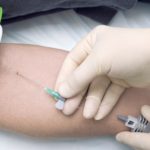
Doctors frequently need to order blood tests in the Emergency Department when patients come to hospital with a medical or surgical emergency. In all but the most trivial cases, laboratory blood tests are requested as part of the diagnostic workup. Doctors and even the patient are often concerned about missing a diagnosis if enough blood tests are not done. However, medical research worldwide has revealed that test ordering is excessive and often unnecessary. The growth in test ordering places an enormous financial strain on our health care system, and includes unnecessary investigations or treatment. Thus, reducing the number of unnecessary…
Principal Investigator:
A/Prof Kevin Chu
Amount Awarded: $130,723
Institution: Royal Brisbane & Women's Hospital

Giving intravenous fluids is one of the most common treatments used for critically ill patients in the Emergency Department; however it is difficult to know exactly how much fluid to give; too much or too little can worsen survival. Doppler ultrasound is a test that can tell us how well the heart is working, and how it is responding to treatment. Ultrasound has been used in intensive care and in the operating theatre but there is not enough research available to know whether it is practical and useful in the emergency room and whether or not using it can improve…
Principal Investigator:
Dr Neil Grant
Amount Awarded: $300,000
Institution: The Prince Charles Hospital

Blood loss is a major cause of early deaths after trauma, accounting for 51% of the deaths occurring during the initial 48 hours after hospital admission. Decisions made in the early treatment of severe blood loss have important consequences for patient survival and length of time in the Intensive Care Unit. Red blood cell (RBC) transfusion is a key component of the management in acute haemorrhagic shock, based on the assumption that transfused RBCs improve delivery of oxygen to the tissues. However existing evidence suggests this may not be the case. Recent studies suggest however that transfusion of older blood…
Principal Investigator:
Dr Andrew Staib
Amount Awarded: $106,375
Institution: Princess Alexandra Hospital
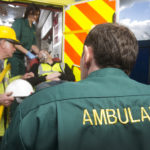
The impact of a new emergency department on patient presentations and ambulance service delivery
This research aimed to investigate the impact of opening a new ED within a health service district. The study involved linking ambulance, emergency department (ED) and hospital data from three EDs to better understand the patient journey and patient and health service outcomes when a new ED opens within the health service. The project aims were to: 1. Describe and compare patient and health service outcomes at three EDs before and 12 months after Robina ED opening; 2. Describe and compare outcomes for patients arriving to ED by ambulance based on whether off stretcher time is/is not delayed by >30…
Principal Investigator:
Dr James Lind
Amount Awarded: $60,000.00
Institution: Gold Coast University Hospital

Chest pain is one of the most common conditions treated in the Emergency Department (ED), but making a diagnosis remains challenging and resource-intensive. Not all causes of chest pain are due to heart disease. Currently, doctors do a blood test to look for the presence of a cardiac chemical called Troponin I to assist them in making a diagnosis of heart disease. This chemical is released from heart muscles when they are damaged and is, therefore, a good indicator of heart attack. However, because Troponin I is released slowly, doctors have to wait for up to six hours to determine…
Principal Investigator:
Prof Louise Cullen
Amount Awarded: $200,000.00
Institution: Royal Brisbane & Women's Hospital
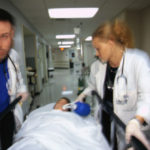
Microcirculation in shocked patients
Microcirculation refers to very small blood vessels that control oxygen and nutrient delivery and removal of waste products from our tissues and organs. Previous research has shown that a decrease in either the number of vessels, or blood flow through these vessels, can be seen in patients who are very sick as a result of infections, blood loss or heart failure. Changes in microcirculation are associated with how sick a patient is and whether or not they recover from illness. However, only small numbers have been included in other studies. The principle hypothesis of this research is that abnormalities of…
Principal Investigator:
Dr Bill Lukin
Amount Awarded: $119,055
Institution: Royal Brisbane & Women's Hospital

Ureteric colic (or Kidney stones) is a significant public health concern within Australia, affecting as many as 5-15% of adults. As a result, a significant number of Australians experience significant pain, hospital and outpatient visits, and the potential for more significant complications such as infection, kidney damage and the need for surgical treatments. Although several methods of medical treatments to improve care of such patients have been studied overseas, some of which appear promising, the practice of “medical expulsive therapy” for ureteric colic is not widely practiced in Australia. One such medication is Tamsulosin, which seems to have an effect…
Principal Investigator:
Dr Jeremy Furyk
Amount Awarded: $278,782.93
Institution: Townsville University Hospital

Errors in prescribing and administering medications and fluids occur often in the hospital setting. However, limited information is known about the number or type of medication errors that occur in the Emergency Department. Moreover, little is known about the factors that cause errors in the Emergency Department. The study will involve looking at the charts of all patients who presented to the Royal Brisbane and Women’s Hospital Emergency Department over a one month period. A nurse and a pharmacist will go through the charts to identify any errors and will categorize them according to the type of error they represent.…
Principal Investigator:
Dr Philip Richardson
Amount Awarded: $88,064.74
Institution: Royal Brisbane & Women's Hospital
> Program

Examining Sepsis in the Emergency Department
Infections, particularly serious infections leading to sepsis, cost the Australian healthcare system millions of dollars every year and impose a significant burden of illness on the Australian community. Serious infections also have the capacity to cause tragedy at a much more personal level, with lethal outcomes possible even in young healthy individuals. Despite the significant consequences of these illnesses, we have very limited information about the best way to identify and treat infection in Emergency Departments. Therefore, research that provides more information is vital. We are conducting a ground breaking body of research to improve our understanding of infection in…
Principal Investigator:
Dr Julian Williams
Amount Awarded: $90,056.17
Institution: Royal Brisbane & Women's Hospital

The “Skills Training Options for Resuscitation in Kids” (STORK) Program
A cardiac arrest in a child has a devastating effect on the child, their family and their healthcare workers. Fortunately, paediatric cardiac arrest is uncommon but if not treated promptly and adequately it results in death or severe brain damage. Providing quality cardiopulmonary resuscitation (CPR) is one of the most important factors in improving outcome after cardiac arrest in children. High quality CPR improves the amount of blood flowing to the brain and heart during cardiac arrest. There is a direct link between increased blood flow and increased survival after cardiac arrest. Unfortunately, current methods for assessing the quality of…
Principal Investigator:
Dr Jason Acworth
Amount Awarded: $220,320
Institution: Royal Children's Hospital
> Patient Flow
> Leading Edge
> JumpStart
> Emerge
> Capacity Building
Rural and remote
> Trauma Care in Regional Rural and Remote Qld
> Trainee
> Staff Specialist
> Special Funding Round COVID-19
> Rural and Remote Research Program
> Research Scholarship
> Research Capacity Building
> Project
> Program
> Patient Flow
> Leading Edge
> JumpStart
> Emerge
> Capacity Building
Queensland
> Trauma Care in Regional Rural and Remote Qld
> Trainee

Patient flow and access block will be evaluated through comparing time to decision making in the Emergency Department (ED) and Emergency Department length of stay (ED LOS) between patients who have POC and Laboratory BNP testing. Cost effectiveness will be evaluated by reviewing treatment type given, admission rate, ICU admission rate, inpatient length of stay (IP LOS), Emergency Department Length of Stay and 30day readmission rate. This study will build upon the findings of a similar concurrent study. Both studies demonstrate a poor utility in BNP testing in patients presenting with shortness of breath in reducing Emergency Department length of…
Principal Investigator:
Dr David Ward
Amount Awarded: $13,050
Institution: Nambour General Hospital

The objective of this research was to evaluate the effect of working consecutive night shifts on sleep time, prior wakefulness, perceived levels of fatigue and psychomotor performance in a group of Australian emergency registrars. A prospective observational study with a repeated within-subjects component was conducted. Sleep time was determined using sleep diaries and activity monitors. Subjective fatigue levels and reciprocal reaction times were evaluated before and after day and night shifts.
Principal Investigator:
Dr James Tilleard
Amount Awarded: $16,850
Institution: Nambour General Hospital
> Staff Specialist

Accurate identification of patients is critical to their safety and to the efficient management of health services. Without accurate identification incorrect procedures may be performed, patients may have unnecessary tests performed on them or there may be delays in their care as pathology or other tests must be repeated. We plan to study the process of patient identification during blood collection in the Emergency Department. This is the most common procedure performed in the Emergency Department. Mislabeling of pathology specimens can lead to fatal adverse events, such as incompatible blood transfusions. Results attributed to the wrong patient can lead to…
Principal Investigator:
Dr David Spain
Amount Awarded: $42,400
Institution: Gold Coast University Hospital

Patients frequently present to the Emergency Department (ED) requiring brief but painful procedures as part of their medical treatment. Completion of these procedures in a safe and timely manner should be a core competency of an Emergency Physician. Insufficient data currently exists to guide the Emergency Physicians in the conduct of these procedures. A specific and highly comprehensive registry of patient related parameters, patient and physician satisfaction with the sedative episode is required.
Principal Investigator:
Dr Greg Treston
Amount Awarded: $50,000
Institution: Redcliffe Hospital

Healthcare workers in emergency departments are at high risk of exposure to blood-borne infections from occupational exposure. The financial and human costs of these injuries are significant. The risks such health care workers face are made more difficult in recent times because of three interconnected reasons. First, emergency care workers are at high risk of occupational exposures because of the nature of their work and the environment they operate in. They work in highly volatile and high-stakes situations. Second, emergency departments face unprecedented demands for emergency medical care. With increased numbers of patients, waiting times for medical treatment inevitably increase,…
Principal Investigator:
Dr Michael Sinnott
Amount Awarded: $50,000
Institution: Princess Alexandra Hospital

The effects of implementation of a tertiary survey tool for multi-trauma patients.
Missed injuries in trauma patients are a well recognised phenomenon. Currently at Gold Coast Hospital there is no formalized process for review of multi-trauma patients who are admitted to the general ward. Anecdotal evidence from the emergency department’s monthly trauma review meeting suggests that there are multiple factors that contribute to missed injuries. Commonly patients with an altered level of consciousness, those that are intoxicated or those that are unstable and require immediate operation, have injuries that may not be recognized in the ED. Also at risk are patients transferred from other facilities that have been assessed and managed elsewhere.…
Principal Investigator:
Prof Gerben Keijzers
Amount Awarded: $46,552
Institution: Gold Coast University Hospital

Emergency Department patients are often sedated before undergoing painful procedures such as manipulation of fractures and dislocations. Propofol is a sedative drug commonly used for this purpose. Presently, the drug is always given by the doctor. However, there is evidence to suggest that the drug can be safely administered by the patient to him or herself. The patient does this by pressing a button on a pump which delivers the drug on demand in a controlled manner. This is called patient controlled sedation. There are potential benefits when the patient gives the sedative drug to him or herself including getting…
Principal Investigator:
A/Prof Anthony Bell
Amount Awarded: $25,247
Institution: Royal Brisbane & Women's Hospital

This study examines the data gathered and documented in patient charts with respect to the possibility of abusive injury in presentations by injured children under 3 years of age, as well as conclusions made by the treating doctor with respect to the possibility of abusive injury, and whether or not a consultation with an emergency or child protection specialist was made in reference to this issue. These data are compared: 1/ Between two sample periods at the Mater Children’s Hospital before and after the introduction of an electronically generated proforma to prompt such data collection 2/ Between these samples and…
Principal Investigator:
Dr Ronald Clark
Amount Awarded: $24,898
Institution: The Royal Children's Hospital

A diagnostic accuracy study for predicting who should have an Advance Health Directive (AHD)
This study sought to validate a modified CARING tool (termed PREDICT) using a population of patients presenting to the Emergency Department. Advanced health directives are legal documents that outline patients’ desires for end-of- life care. For individual’s nearing the end of their lives, advanced health directives are an important part of their treatment plan. This is because they tell health care providers about the patient’s wishes regarding treatment near the time of death. However, very few patients hold these documents. This study looks to see whether we can easily identify individuals who are nearing the end of their lives, and…
Principal Investigator:
Dr Philip Richardson
Amount Awarded: $47,003
Institution: Royal Brisbane & Women's Hospital
> Special Funding Round COVID-19
> Rural and Remote Research Program
> Research Scholarship
Frank Garlick Research Scholarship: Dr Joseph Ting
The Frank Garlick Research Scholarship enabled Dr Joseph Ting to complete the Master of Science (Clinical Trials) at the University of London.
Principal Investigator:
Dr Jospeh Ting
Amount Awarded: $150,000
Institution: Mater Adult Hospital
Noel Stevenson Research Scholarship: A/Prof Peter Aitken
Disasters have caused the loss of more than 12 million lives and affected more than 50 million people in the past 50 years alone. Disasters involve not just more patients, but a different type of patient in a system under extreme stress. Emergency Departments (ED), as the ‘front door’ to the health system are a key part of the disaster response and a well prepared ED is essential to save lives. Being prepared involves education and training however disaster health education is not well developed in Australia. The research program aim is the development of a disaster education framework for…
Principal Investigator:
A/Prof Peter Aitken
Amount Awarded: $150,000
Institution: The Townsville Hospital
> Research Capacity Building
> Project

This study aims to improve our understanding of sepsis in Australian Emergency Departments. We will do this by analysing in great detail the spectrum of infection syndromes presenting to the Emergency Department of a typical large Australian hospital over a period of several years. This will allow us to: 1) Identify the number of patients presenting to hospitals each year with severe infections and the outcome of these presentations. 2) Analyse the factors and information available to doctors in the Emergency Department that are associated with overall prognosis in patients with infection. 3) Build a comprehensive picture of the spectrum…
Principal Investigator:
Dr Julian Williams
Amount Awarded: $200,000
Institution: Royal Brisbane & Women's Hospital

Impact of the Emergency Department Patient Admissions Predictive Tool (EDPAPT)
Hospital occupancy rates regularly approach 100%, with resultant access block, ambulance bypass, and the last-minute cancellation of elective surgery patients. More efficient management of inpatient beds to reduce these predicaments is imperative. This project will evaluate the impact of a patient admission forecasting system - the Emergency Department Patient Admissions Predictive Tool (EDPAPT) - that has been developed from analysis of historical admissions data at the Gold Coast Hospital. The aim of the project will determine whether a model that forecasts patient admissions can assist with the allocation of inpatient beds to alleviate one of the major problems of most…
Principal Investigator:
Dr David Green
Amount Awarded: $100,000
Institution: Gold Coast Hospital and Health Service
